Submitted by WA Contents
GASS Architecture Studios built green school with rounded walls and leaf-like roofs in South Africa
South Africa Architecture News - Apr 26, 2022 - 11:14 9902 views
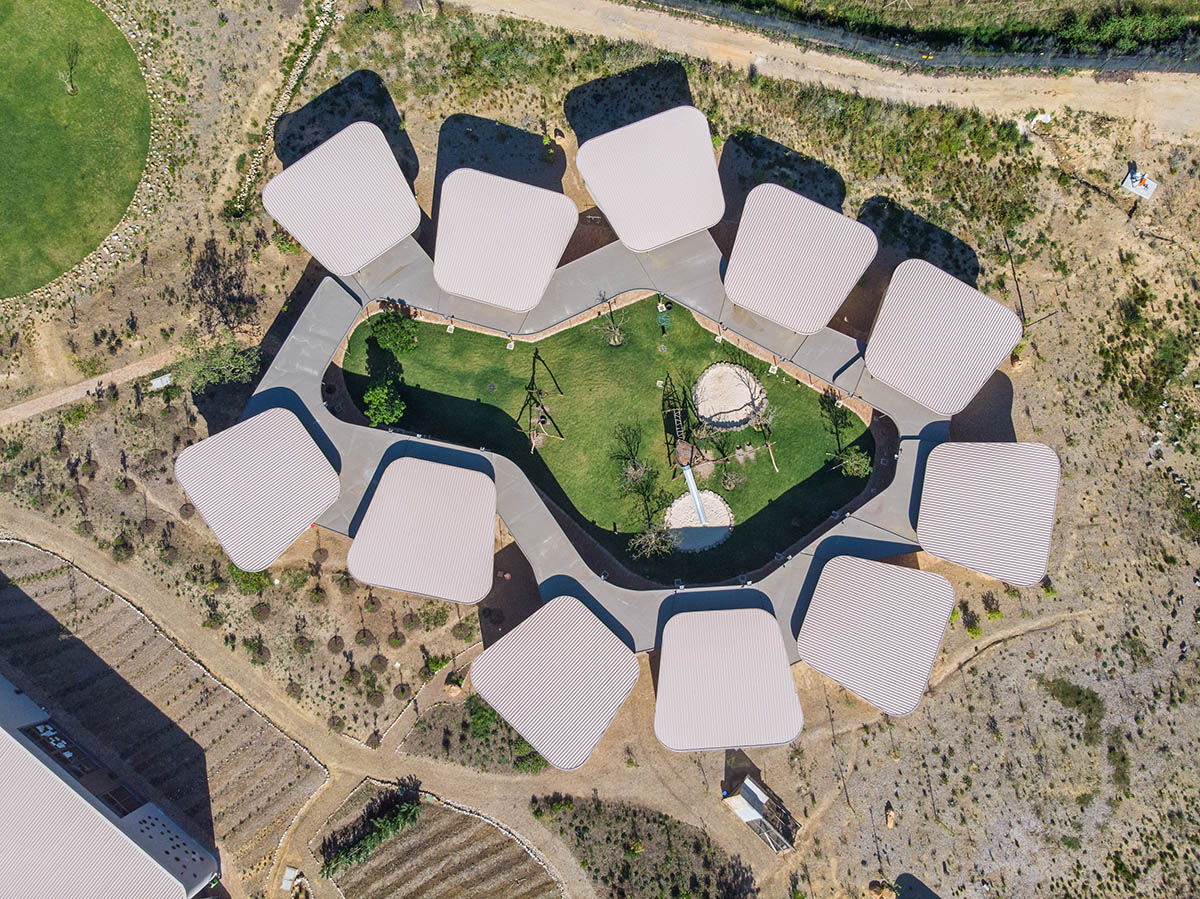
South African architecture practice GASS Architecture Studios has built a school complex with rounded rammed earth walls and sailing leaf-like roofs in the low-lying Paarl Valley in the Western Cape, South Africa.
Named Green School South Africa, the 3,313-square-metre complex was completed as part of a larger masterplan, which includes kindergarten, primary school, middle school, high school, Ihub, cafeteria, drama and music building, multipurpose space, sports fields, amphitheater.
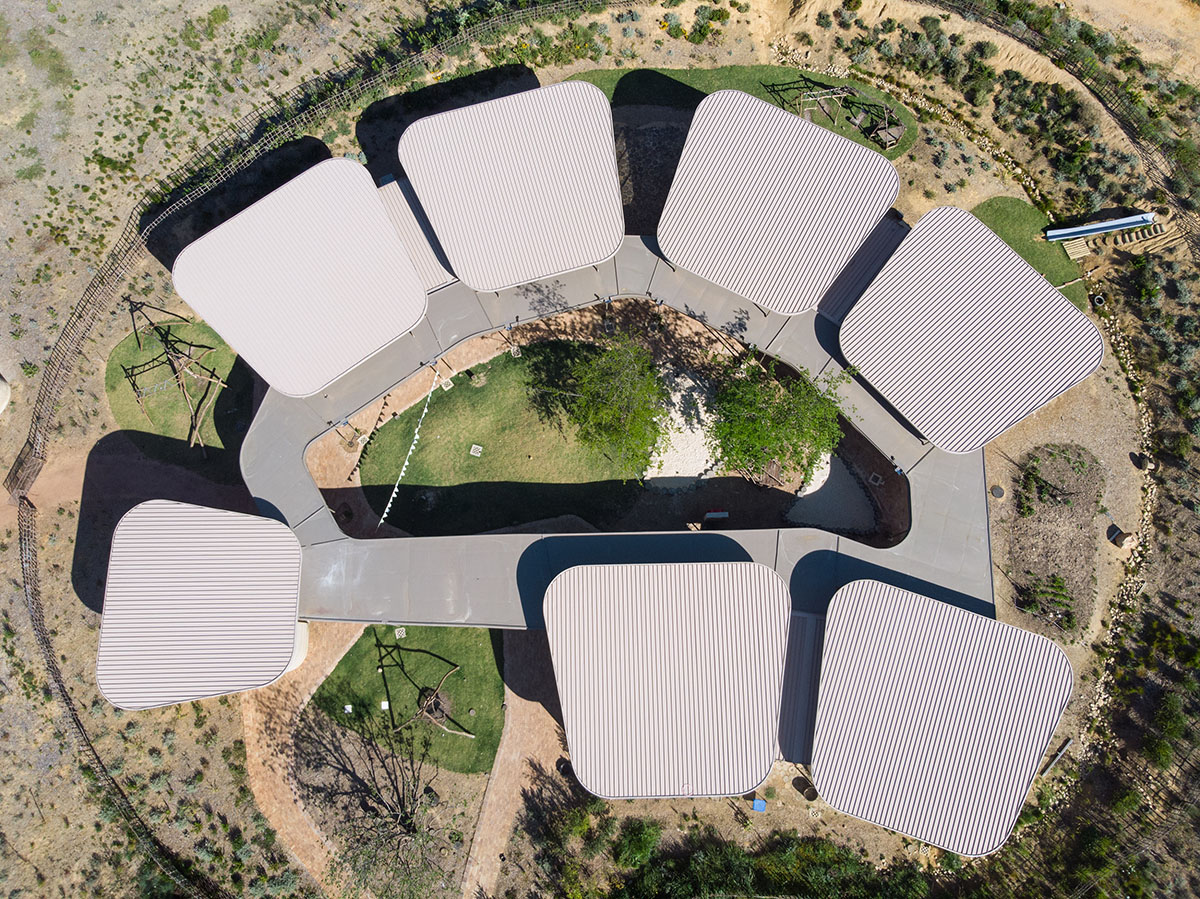
Green School South Africa is envisioned as an 8-hectare (80,000-square-metre) sustainable school campus in the Paarl Valley that is defined by the Paarl Berg to the north, Drakenstein Mountains to the east and south, and Simons Berg towards the south west.
Developed in multiple phases, the first phase of the campus was completed in February 2021.
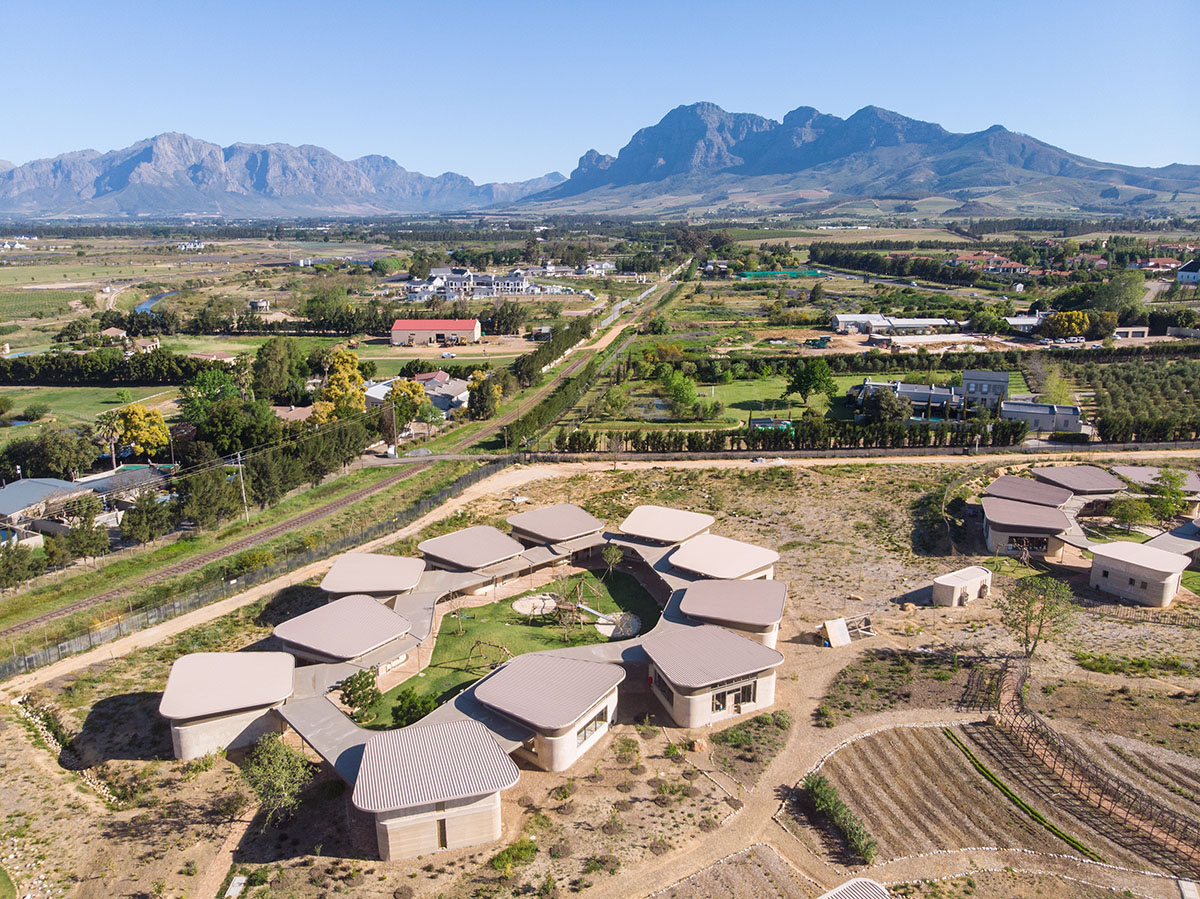
In this first phase, the completed building include Primary School, offering 16 classroom facilities for children - ranging from Kindergarten building to Gr 8, the Sangkep (it's a Balinese term used for a multipurpose space), an Administrative Building and the Heart of the School.
The second phase of the complex is planned to start in 2023, which will include Middle School and High School buildings.
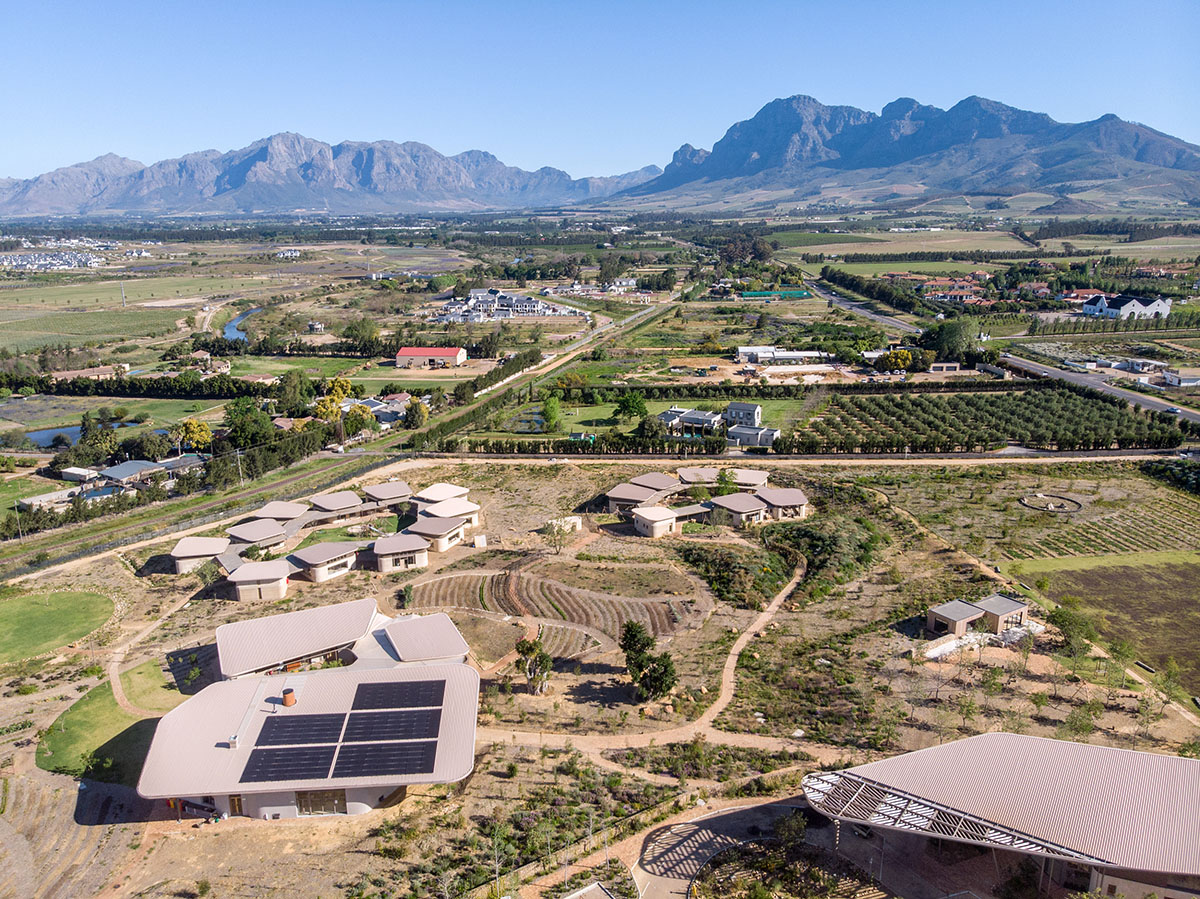
For the whole complex, the studio devised a spatial arrangement at a macro level, starting from the design of the buildings and the design of public spaces that meander around the volumes.
All units, landscape elements and social functions are intertwined together in a harmonious way.
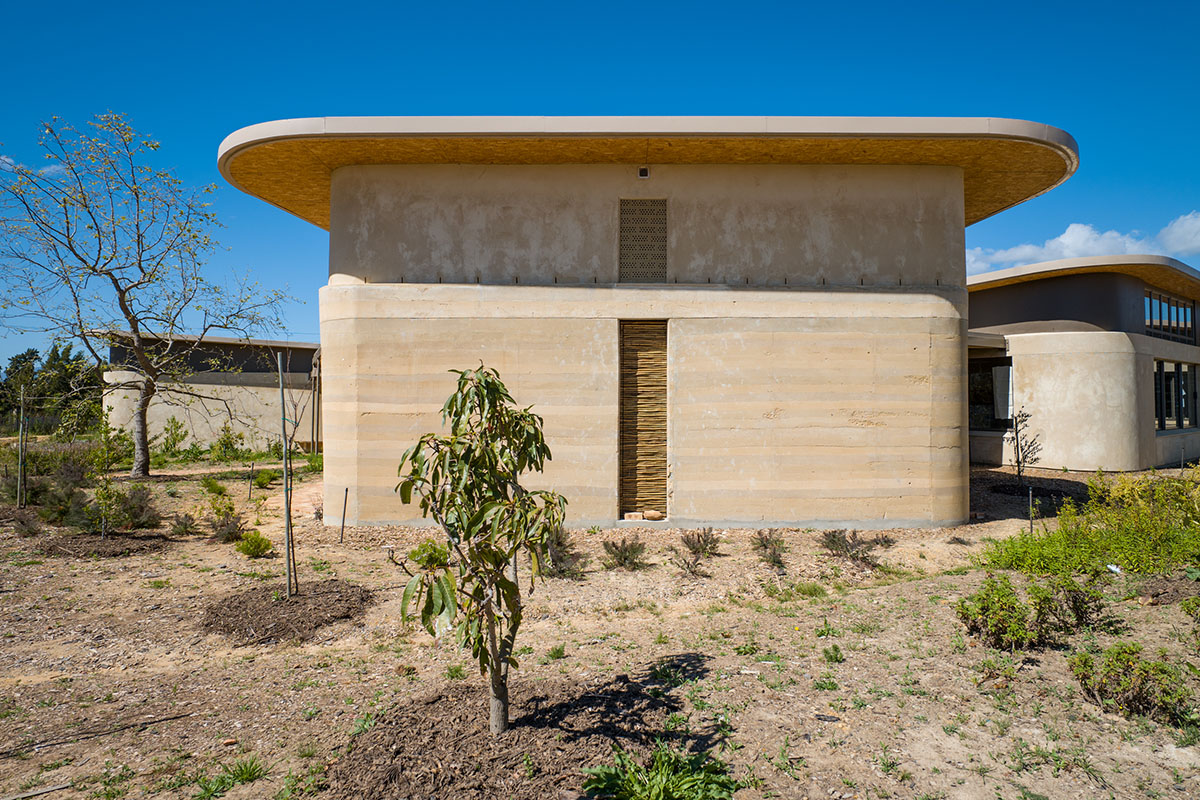
School units are distributed in a random and circular form, forming a large inner courtyard.
Smooth corners are obtained by using rammed earth walls in single-storey school units. This approach also determines the general language of the entire masterplan.
To achieve "organic tectonic shapes", the practice draws inspiration from the mountains that contain the valley but also more directly from the Paarl Berg Boulders.
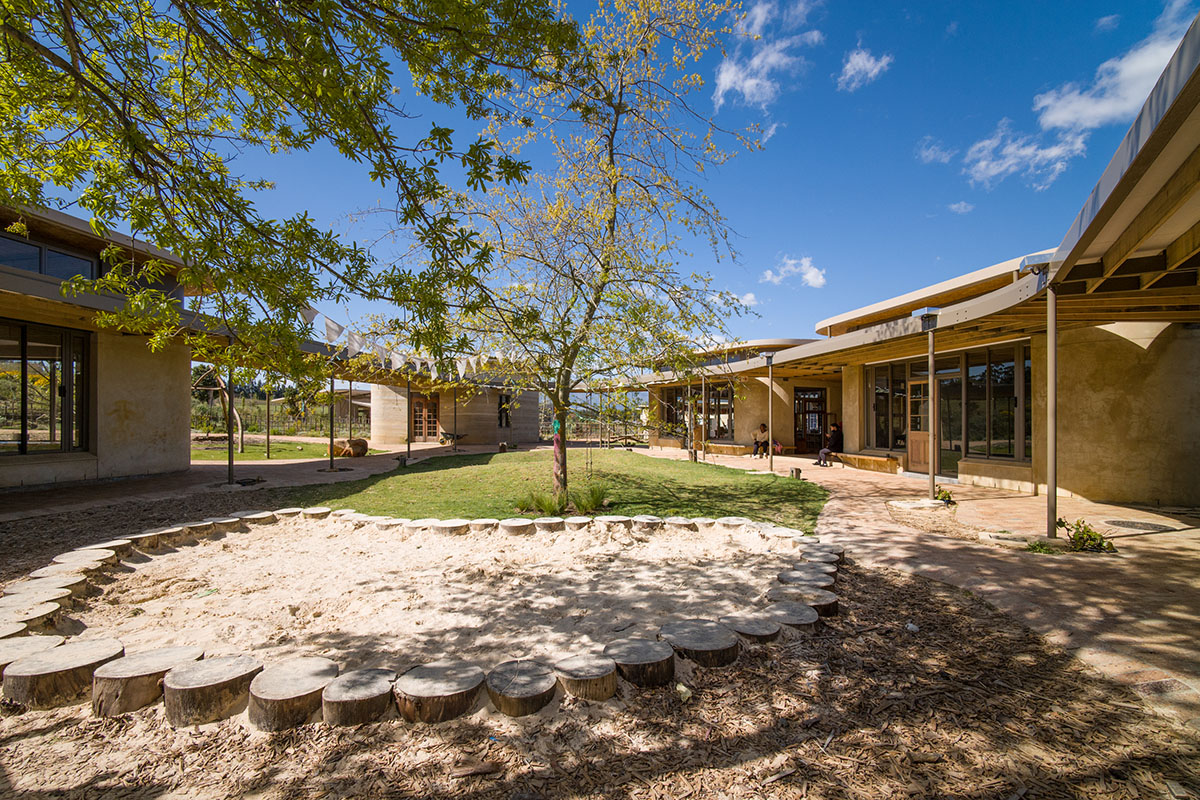
"Reoccurrence of multiples at incremental scales is an idea that defines the behavior of most natural systems," said GASS Architecture Studios.
"These solid shapes are arranged to accommodate the programmatic need of each of the individual buildings," the office added.
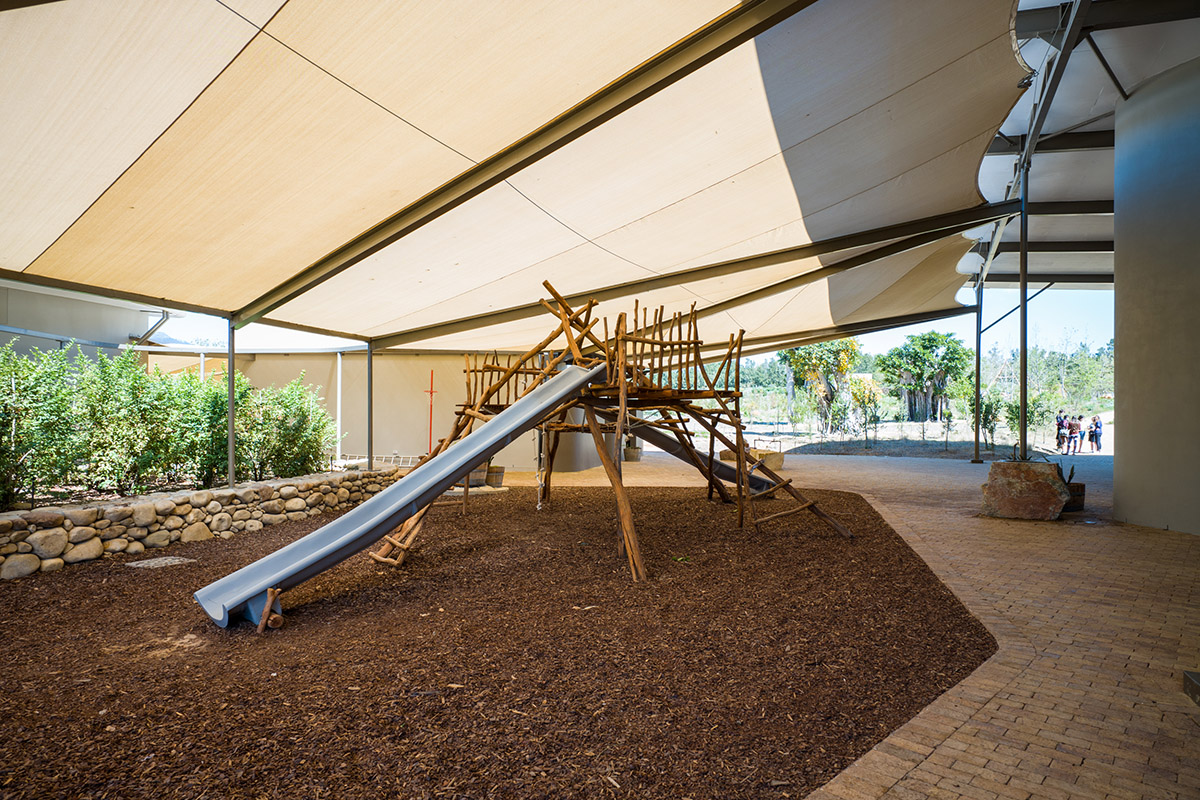
The whole school campus is arranged with various clusters of buildings nestled in amidst orchards, vegetable gardens, walkways, landscaped terraces and spill out spaces.
The architects interweave individual clusters of buildings with landscaping and a series of organically shaped "werf" walls to form a coherent whole and a world of passages and various spaces for students to explore.
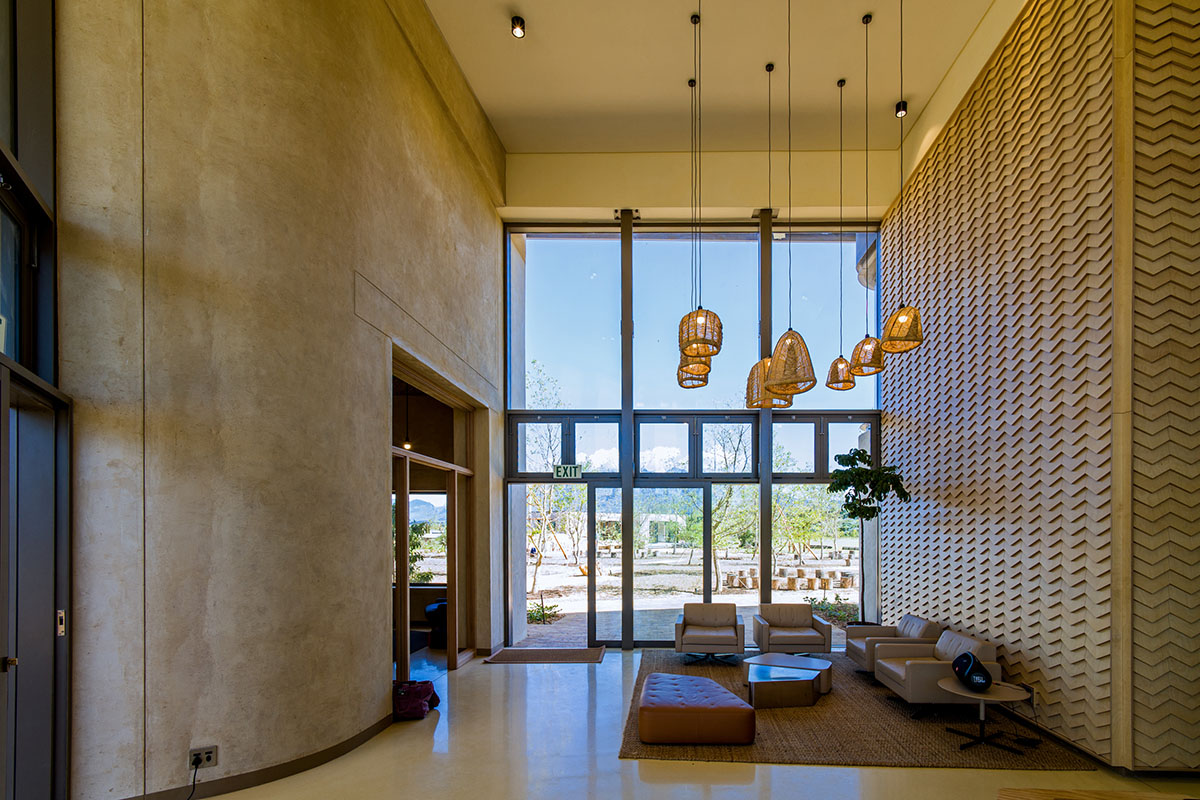
Upon arriving at the school, visitors are guided by a landscaped gabion wall towards the Administrative Building that is situated on the main axial circulation spine of the campus, linking the more public buildings together.
On the main axial circulation spine of the campus, the buildings include the Sangkep (a multi-purpose space), tree-lined Market Area, Deli, Co-Working Space and Heart of the School.
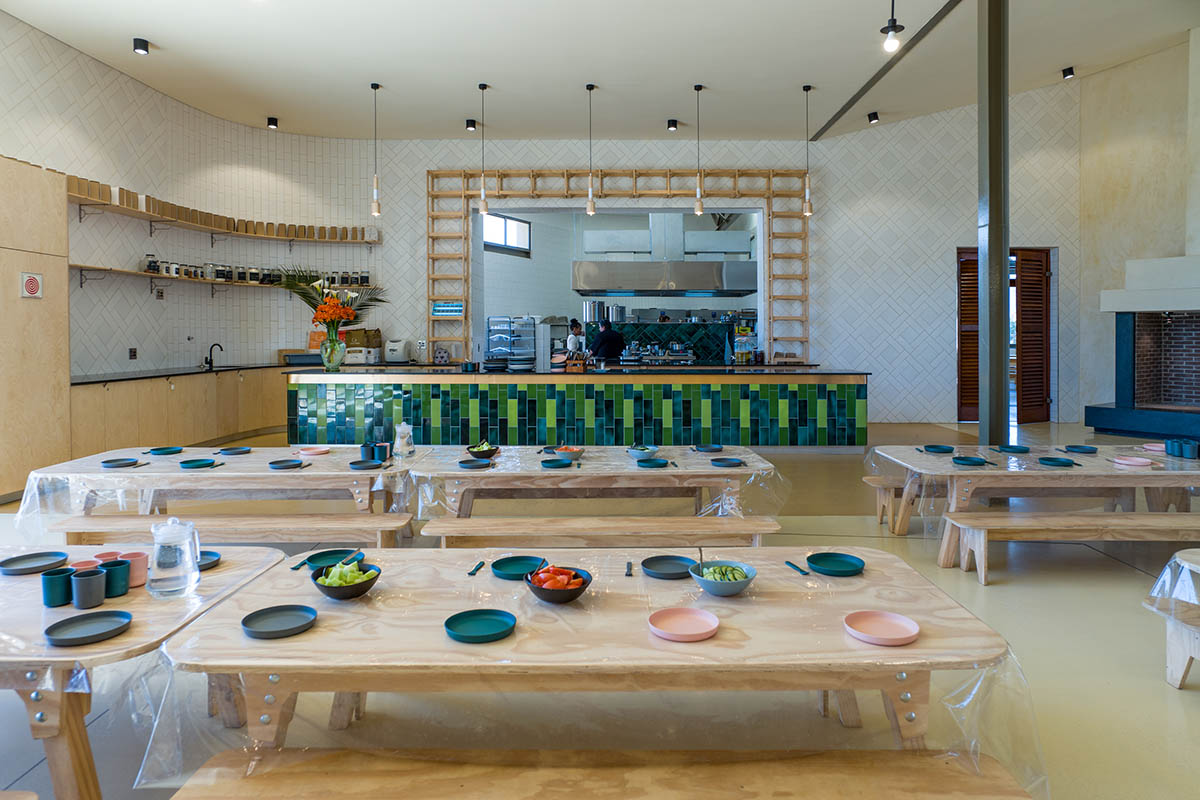
At the heart of the campus, there is the Heart of the School precinct where all the paths converge. This building is defined by three boulder‐like shapes defining the path leading from the arrival plaza.
The one side of the building contains the Dining Hall, Life Lab and Kitchen, and the other a Library, Art and Music Studio and Ablution Facilities.
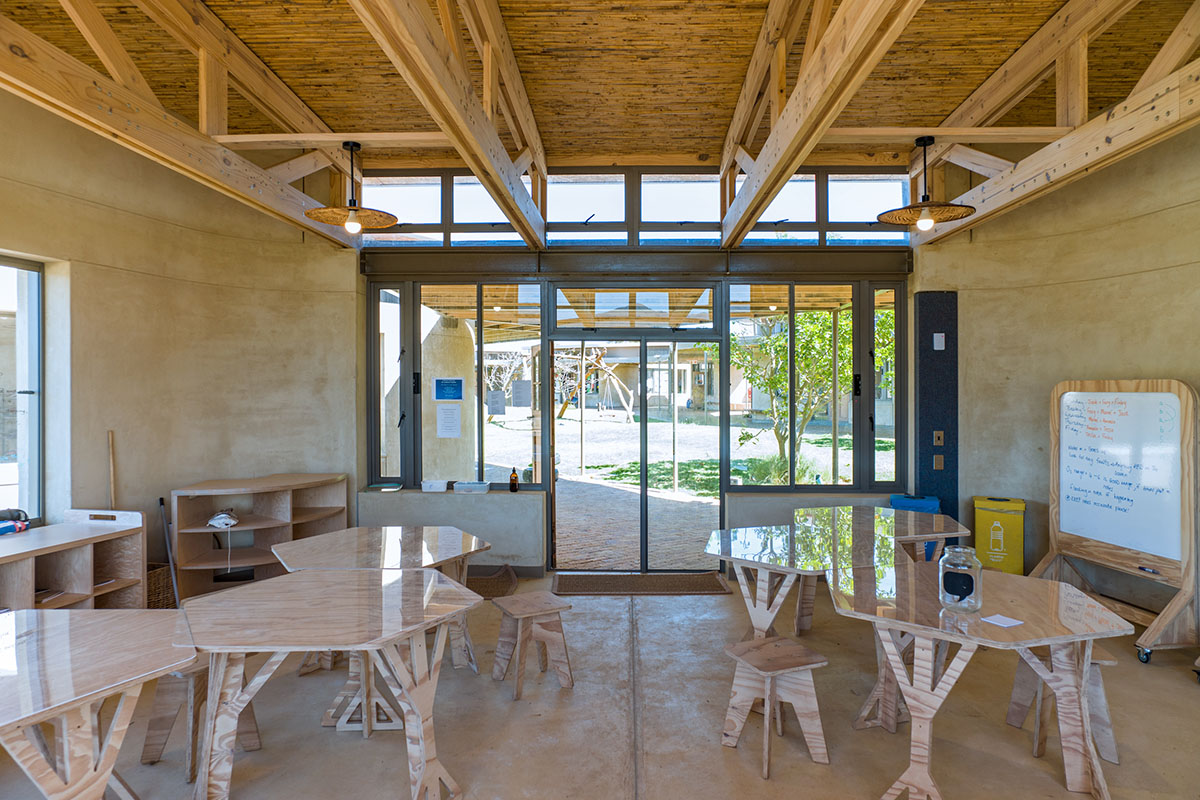
The architects create a main circulation spine that branches off into carefully considered meandering pathways, to create moments of excitement, wonderment and discovery.
On the other hand, these secondary routes guide visitors to the Primary School and Kindergarten where both spill out in landscaped courtyards.
On the south of the campus, the Kindergarten Cluster is sheltered and hidden by landscaped berms, while the walkway is covered with a hand-woven sapling growing tunnel.
"The positions of the different zones and buildings have been carefully considered, taking into account passive design principals of Feng Shui and the seven petals provided by the Living Building Challenge," said the studio.
In the end, the office creates a harmonious spaces where humankind and nature can reconnect.
To achieve this balance between inside and outside, the studio maintains the building walls in minimum to allow for big expansive openings ensuring visual connection between inside and outside.
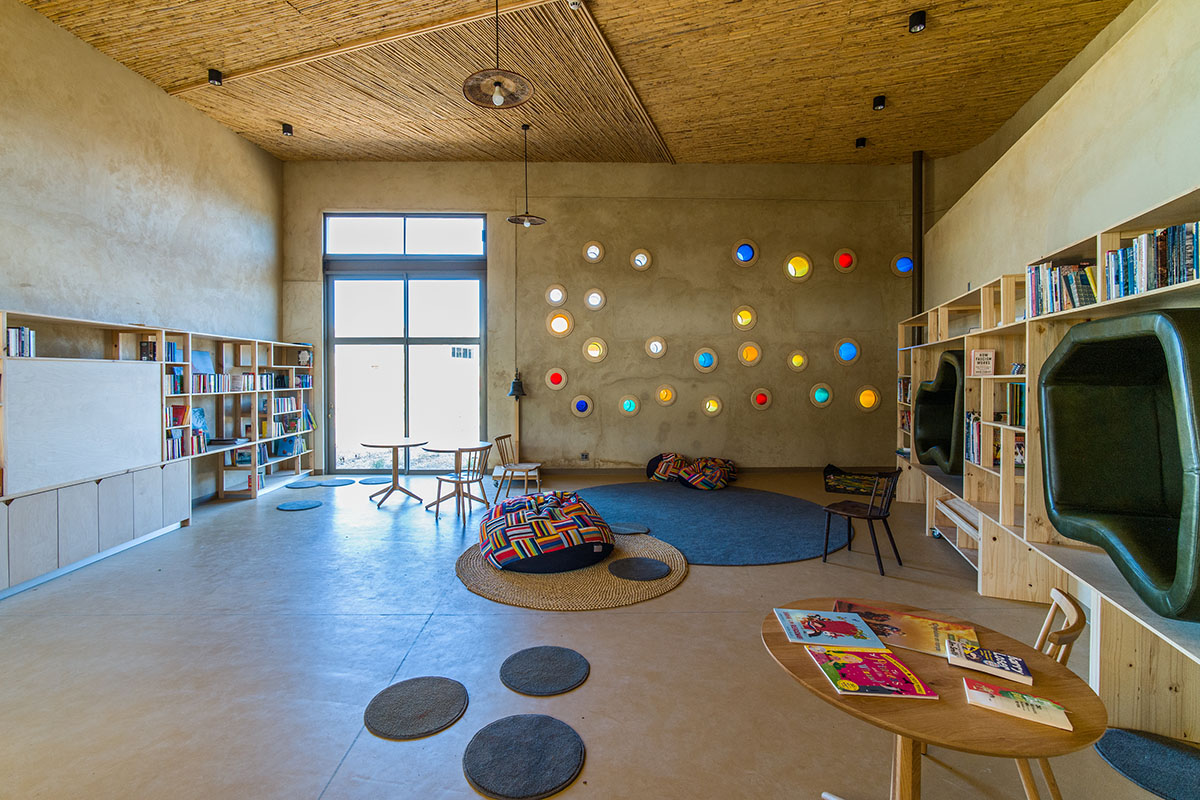
"The visual connectedness of the buildings is not the only aspect that link the architecture with nature," according to the architects.
Building units are constructed from naturally and locally sourced materials, such as dek-riet ceilings, clay and soil excavated from site to be able to create rammed earth walls and lime plaster walls and floors.
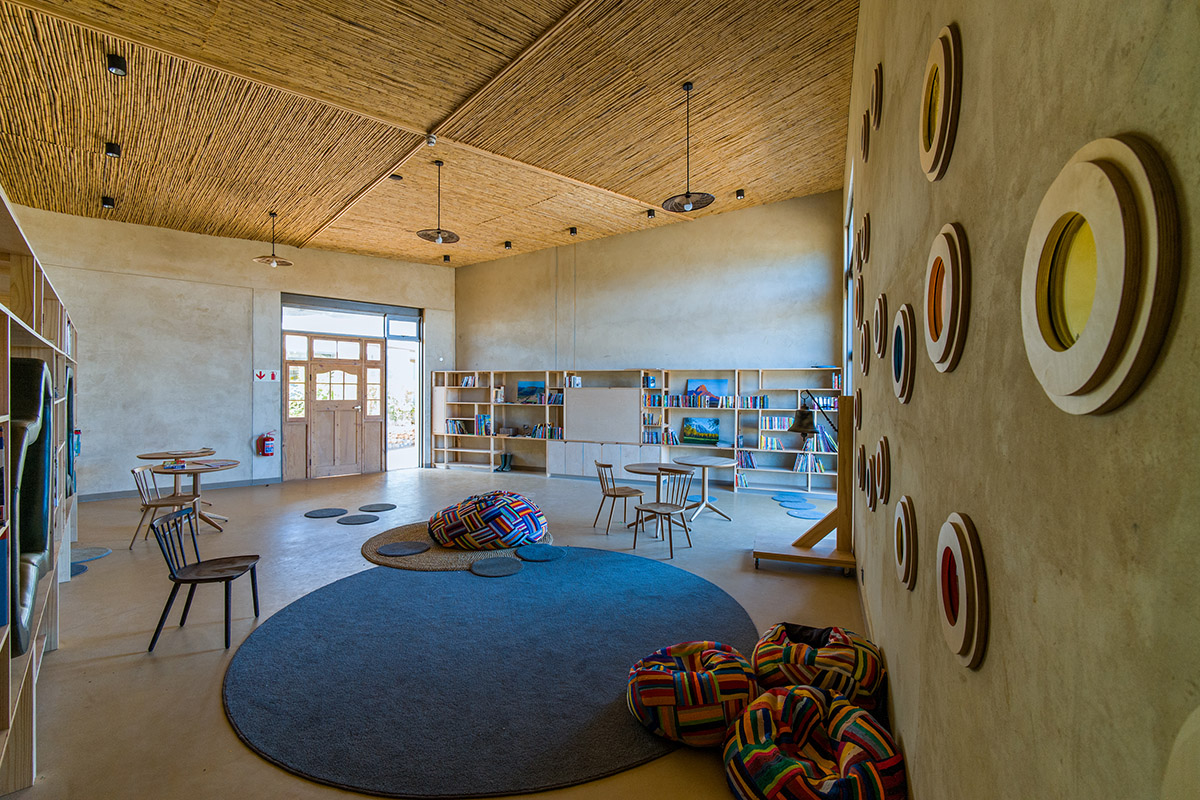
Besides, the studio retrieved the pebbles from the project site to construct gabion walls, and reclaimed tique doors from the larger Drakenstein region.
According to the architects, this process was implemented to better integrate the architecture with its surroundings, celebrating materials and craftsmanship from the local area.
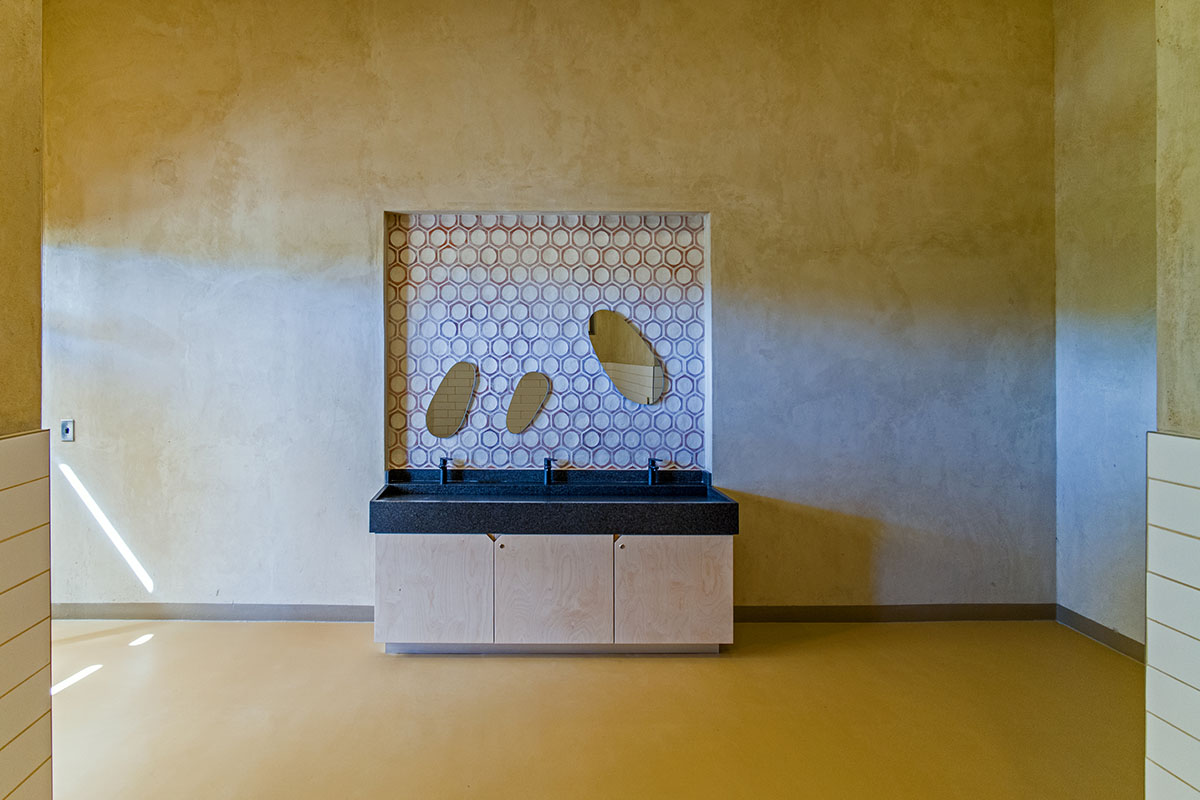
The office created these organic shaped stereotomic buildings by using large oversailing leaf-like roof structures that help collect rainwater.
They also used punched openings to frame vistas, bay windows, thick rammed earth or clay brick walls, clerestory windows for filtered natural light and ventilation, textured screening elements - which all create enticing and playful spaces.

As the team emphasized, "this multi-layered development where architecture and landscape coincide, creates for enticing and playful spaces where children can engage, explore and learn."
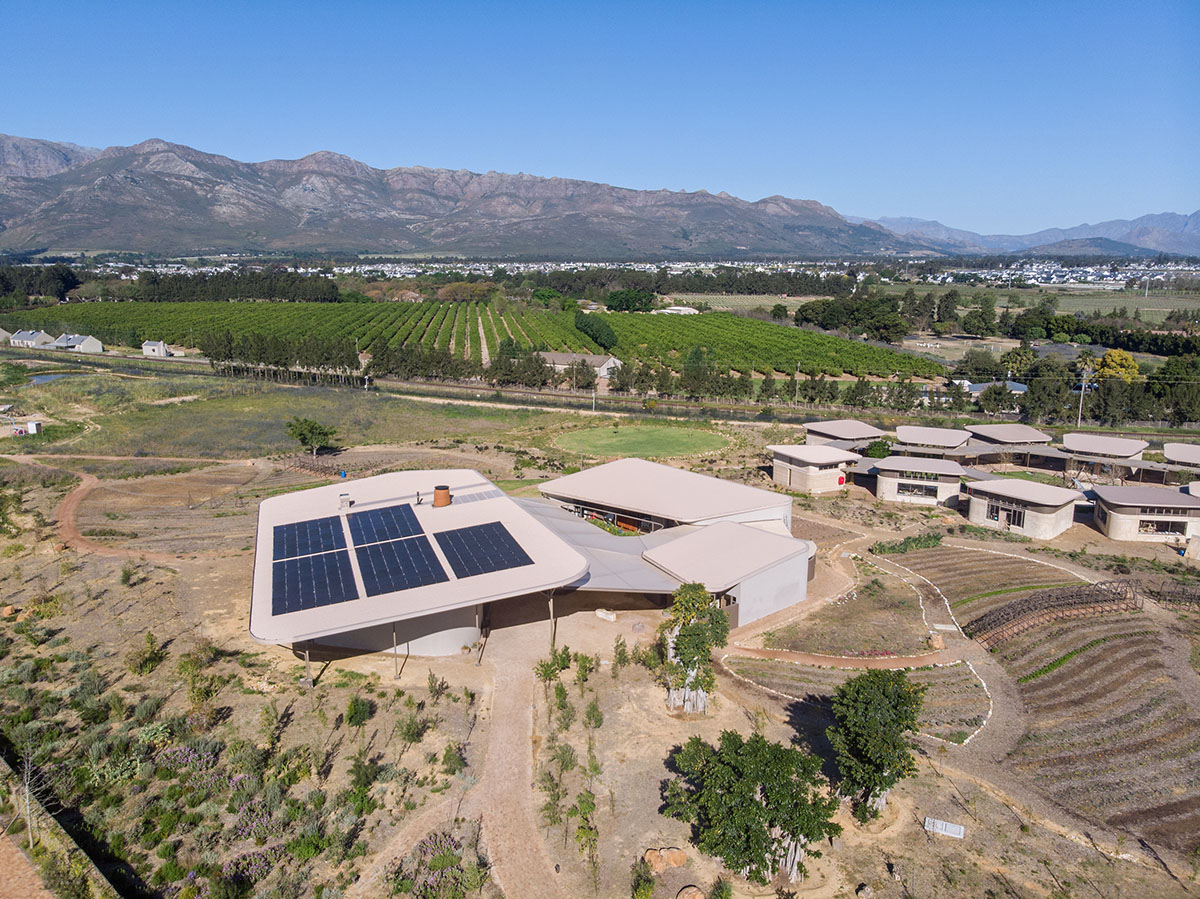
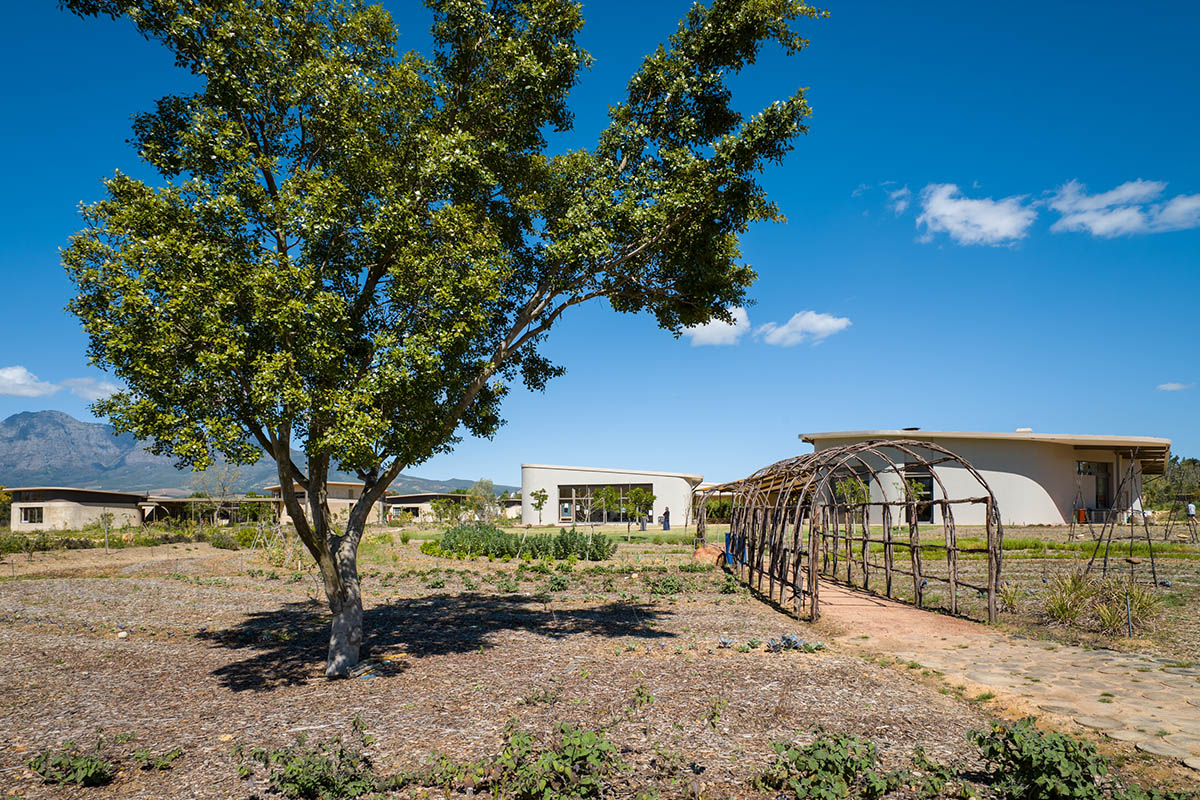
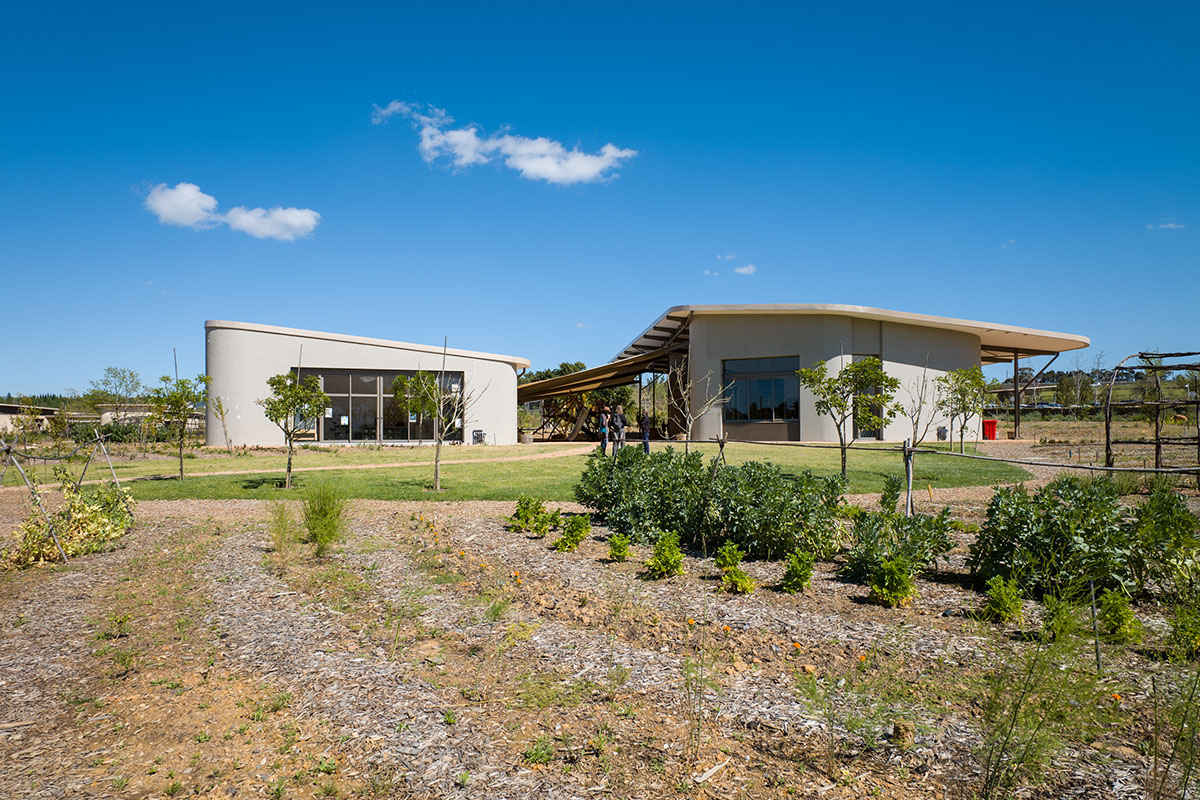
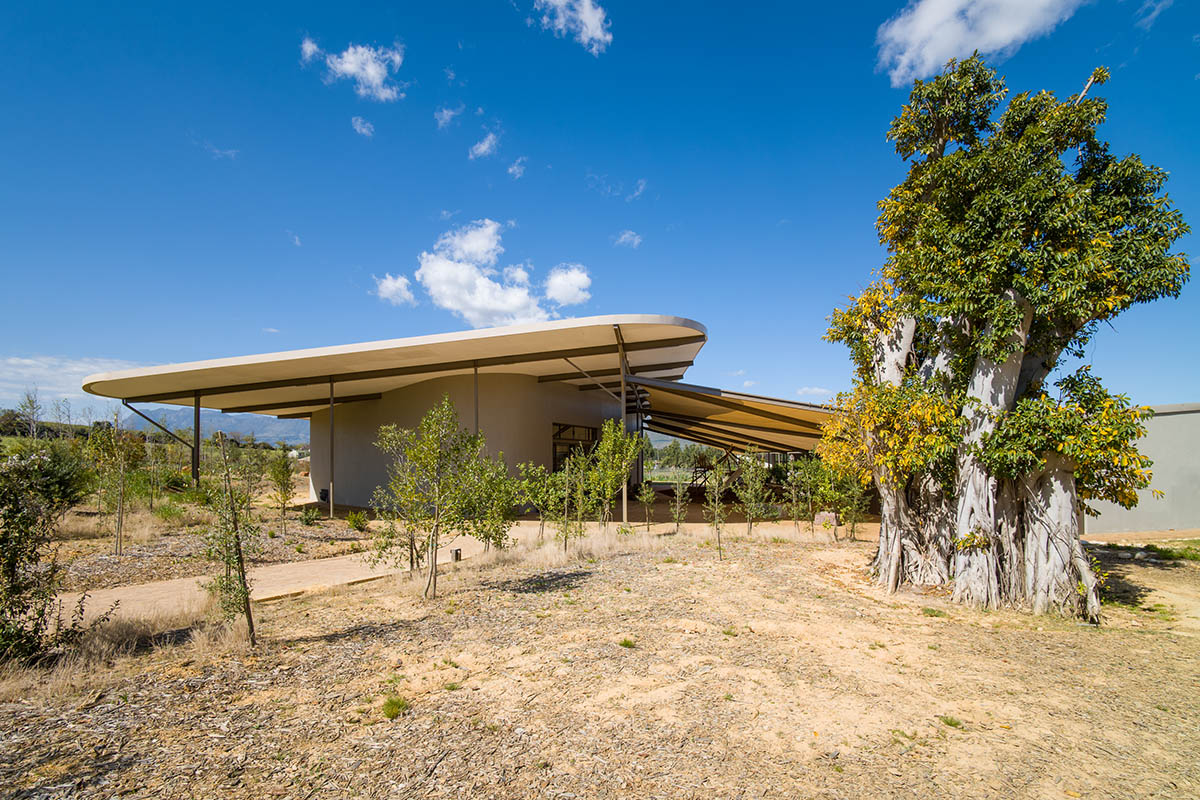
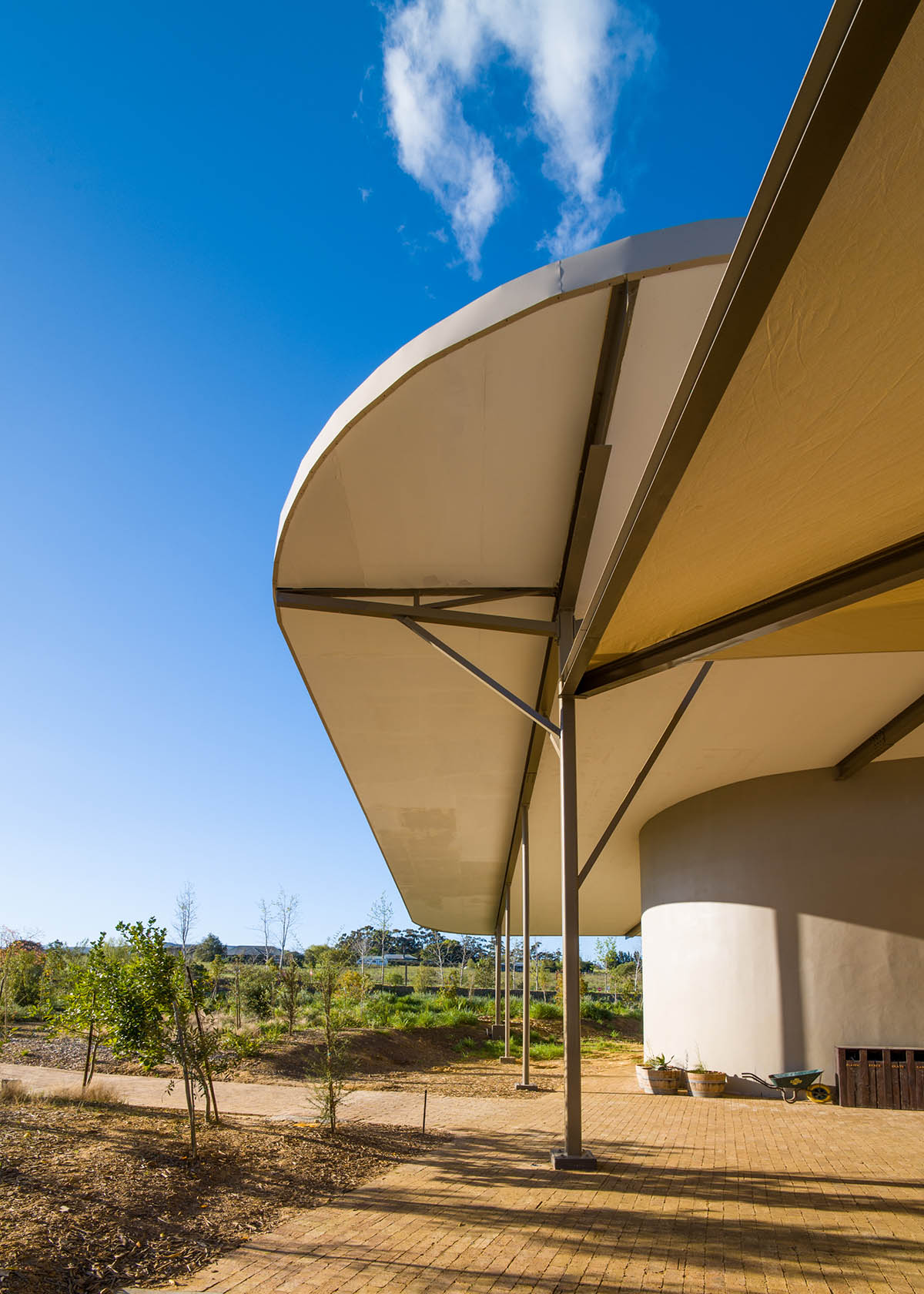
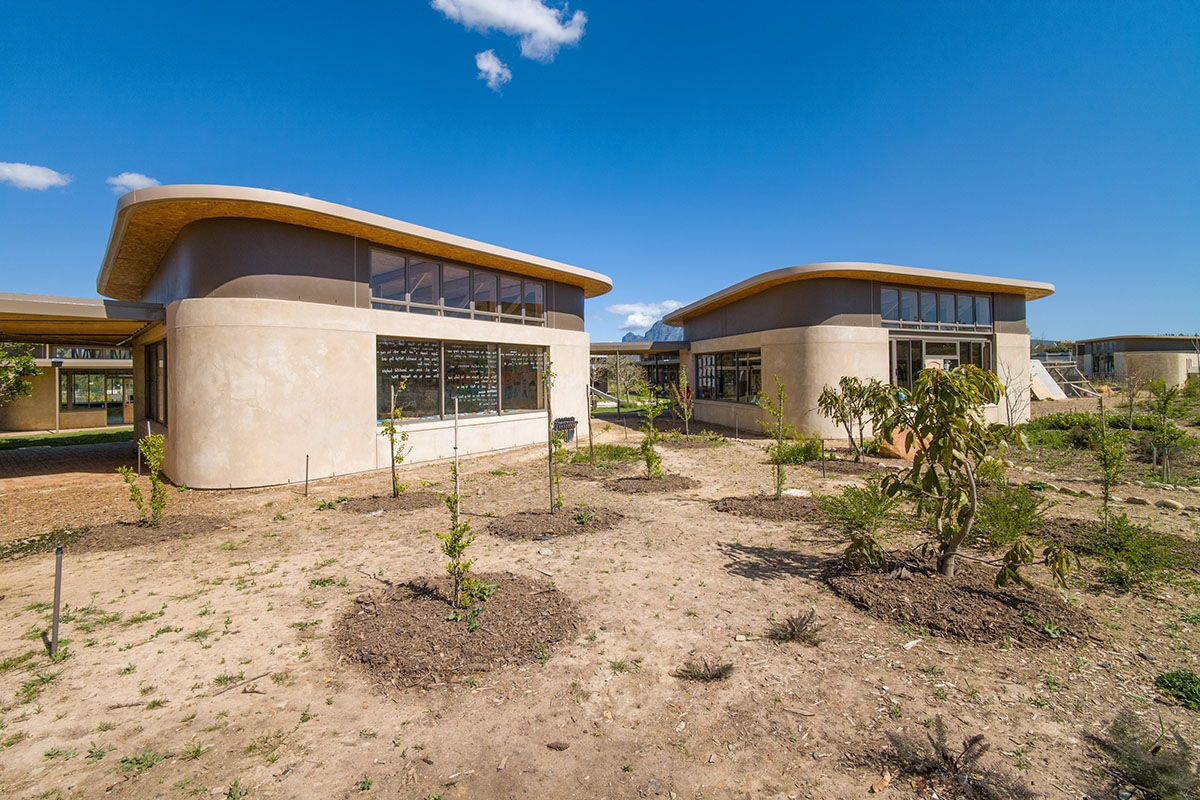
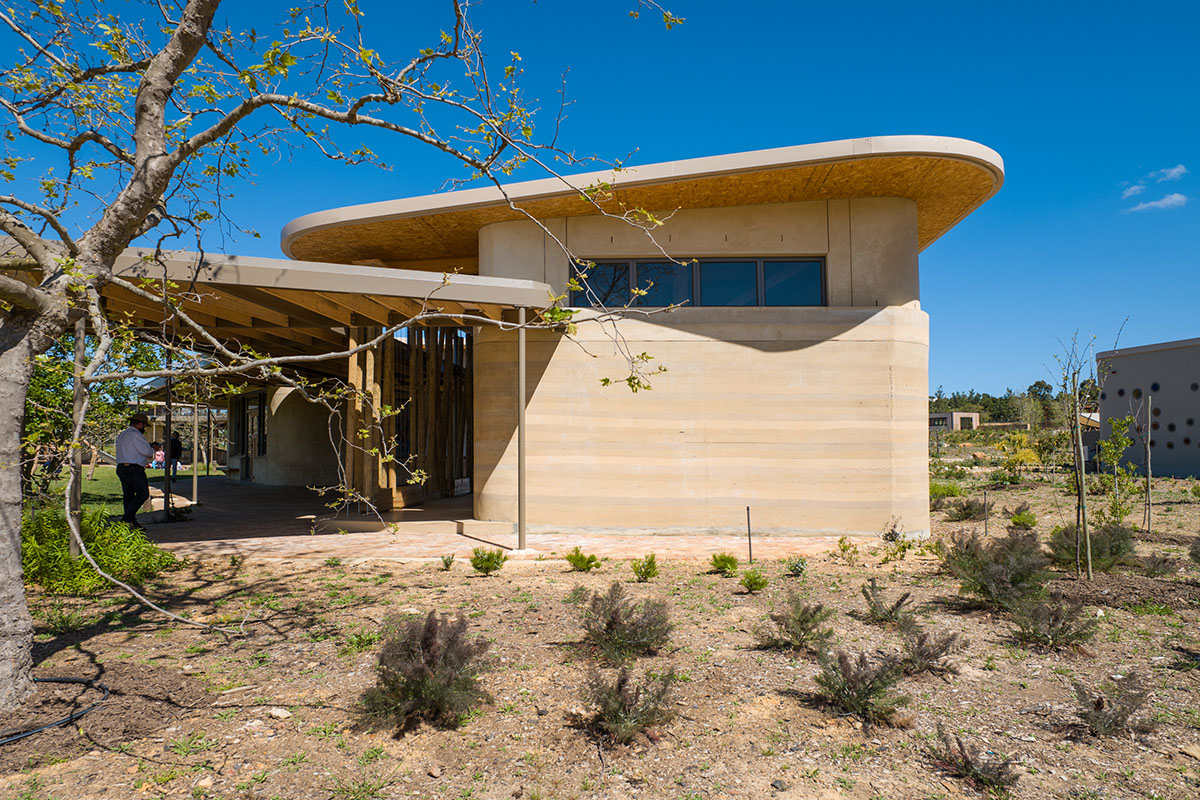
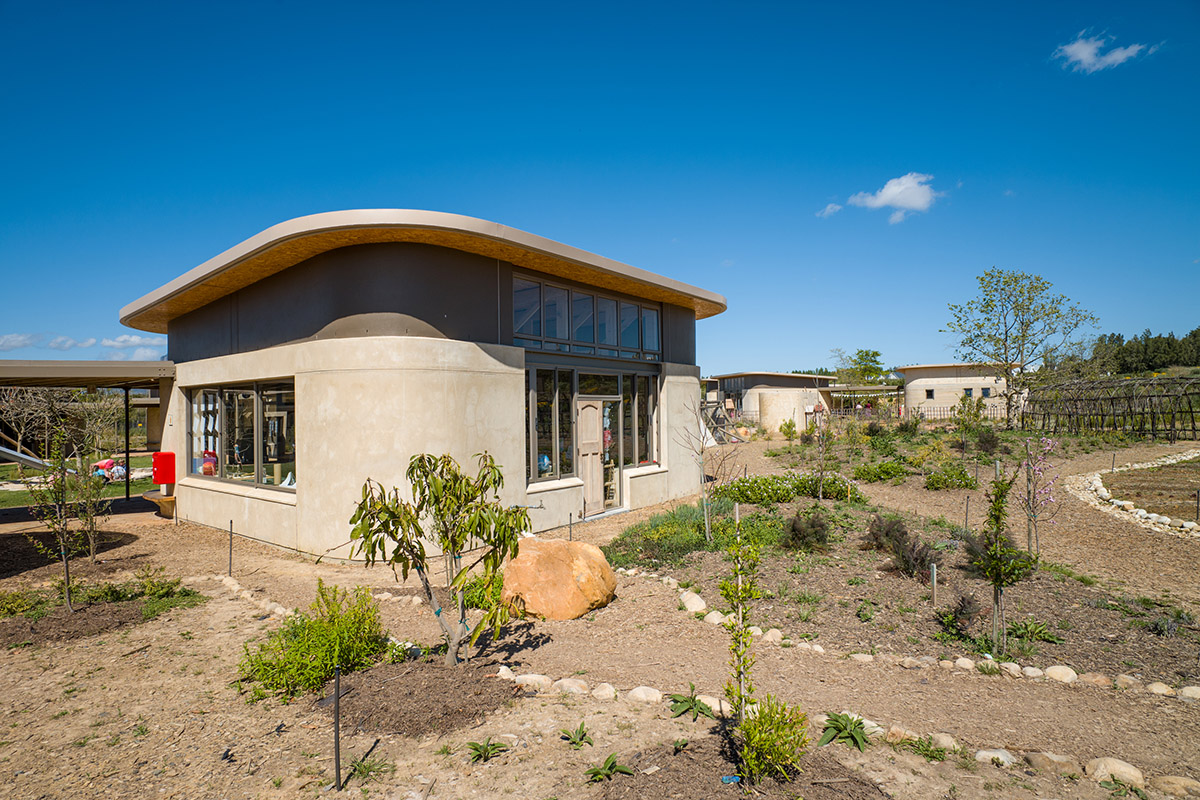
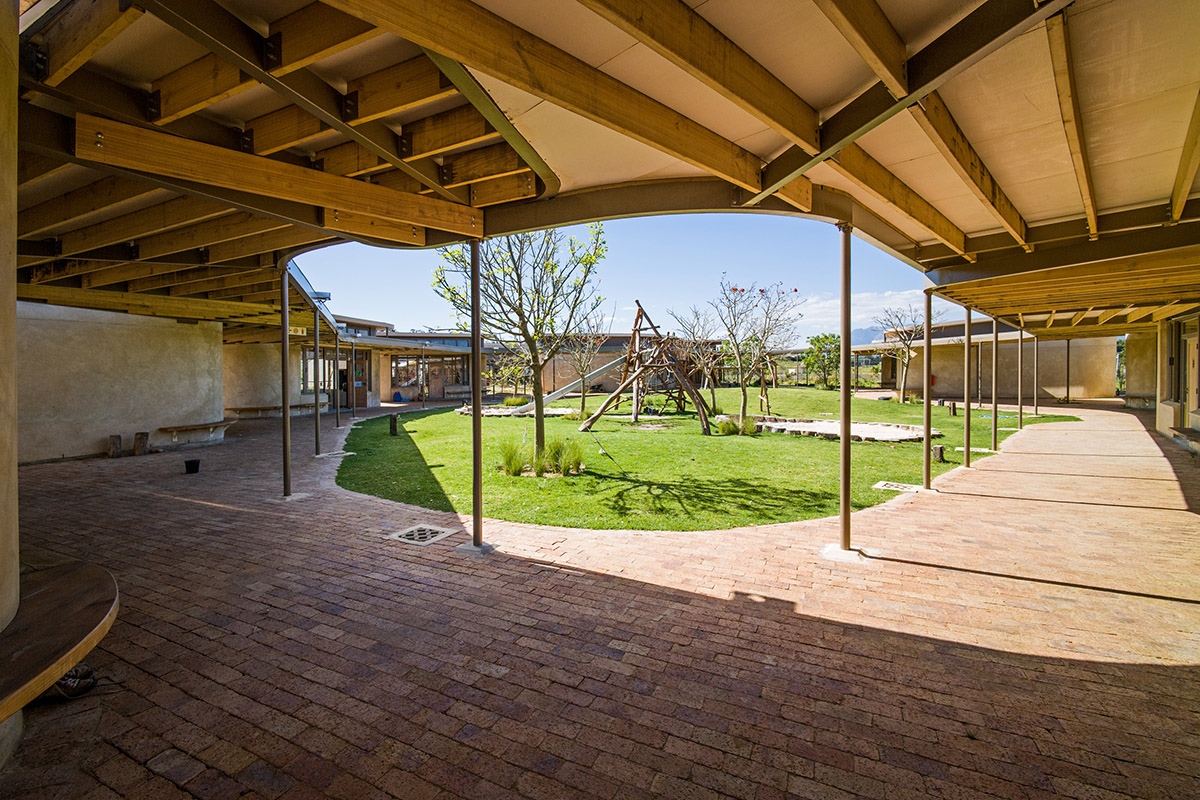
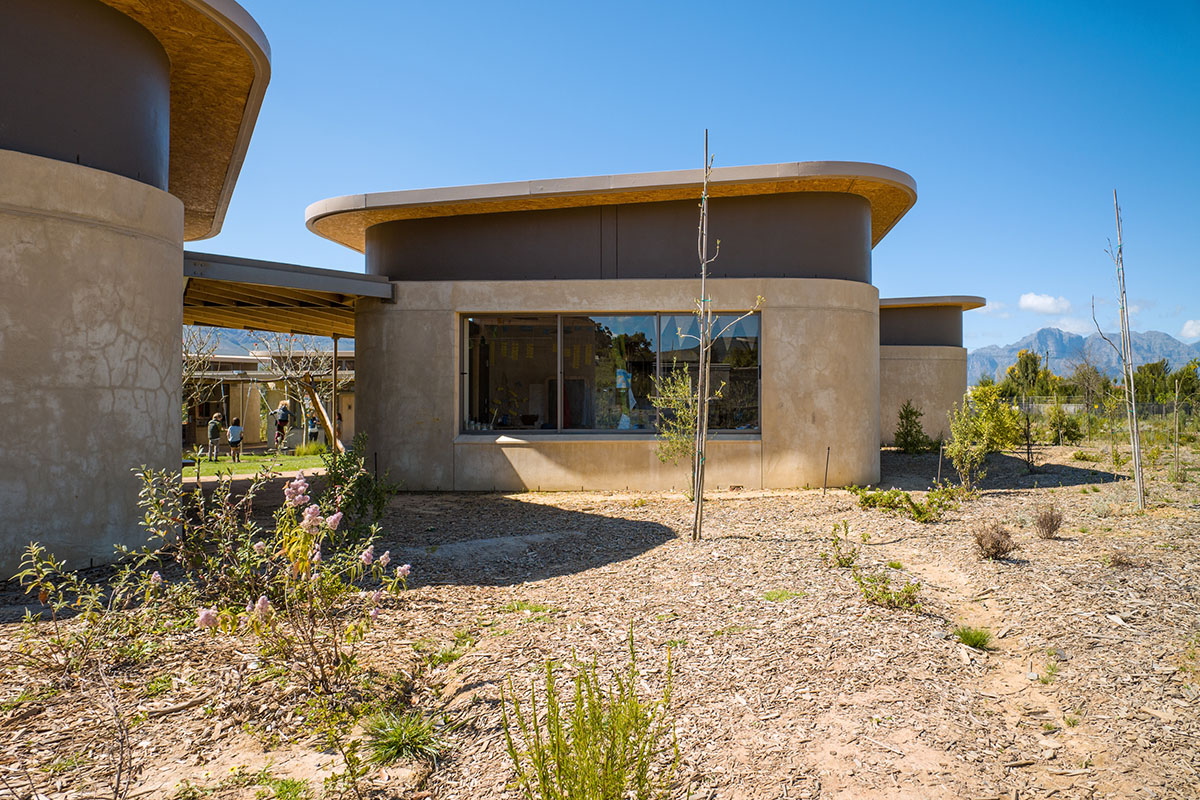
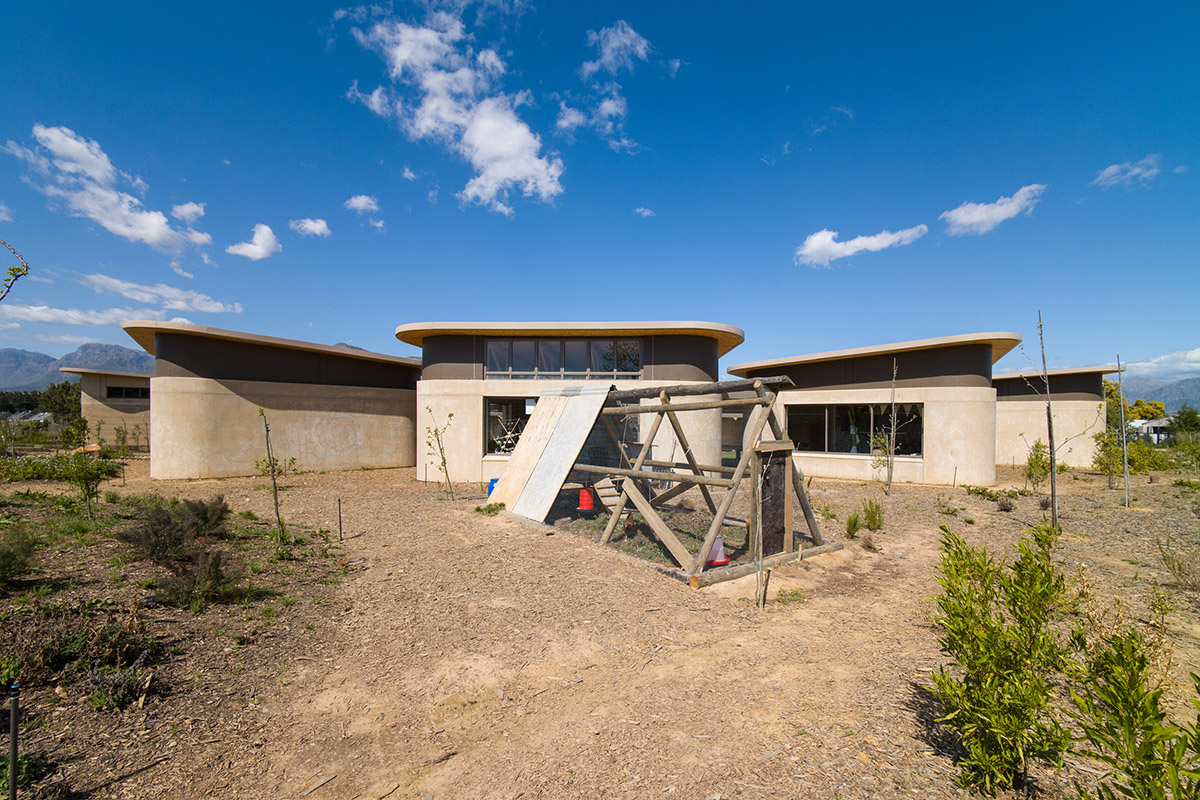
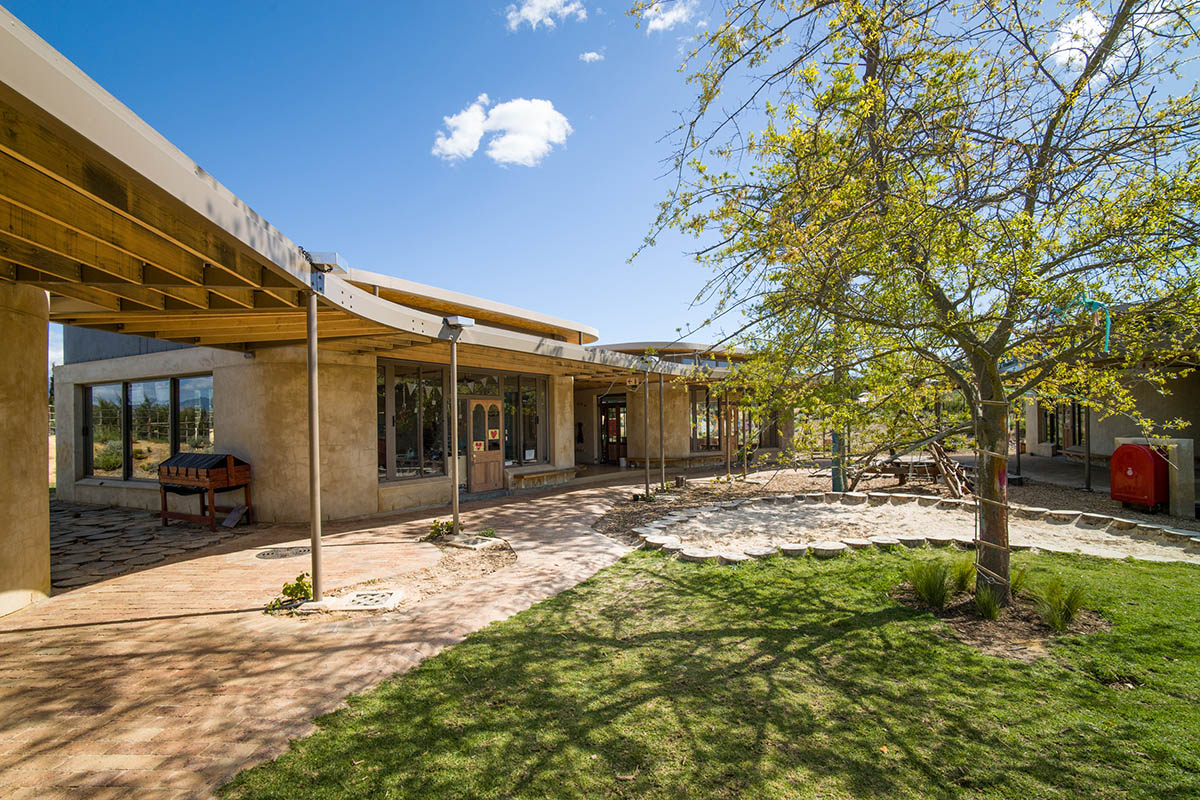

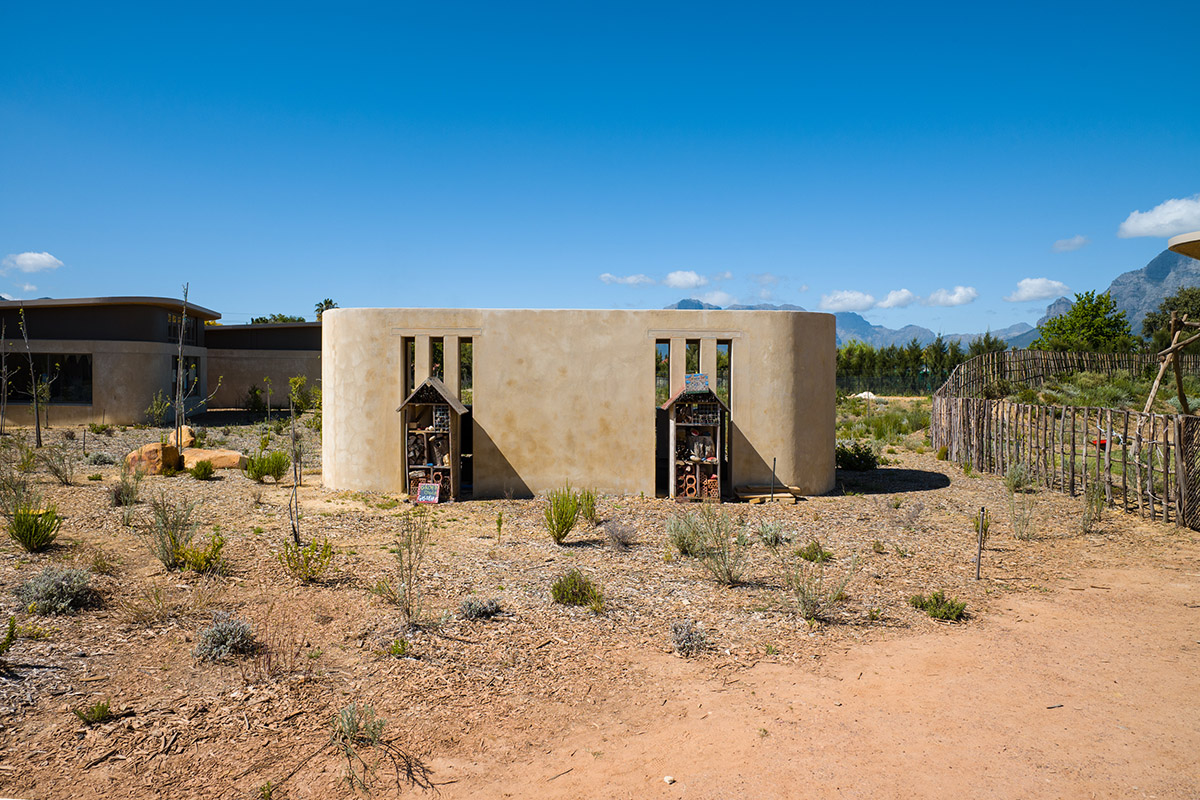
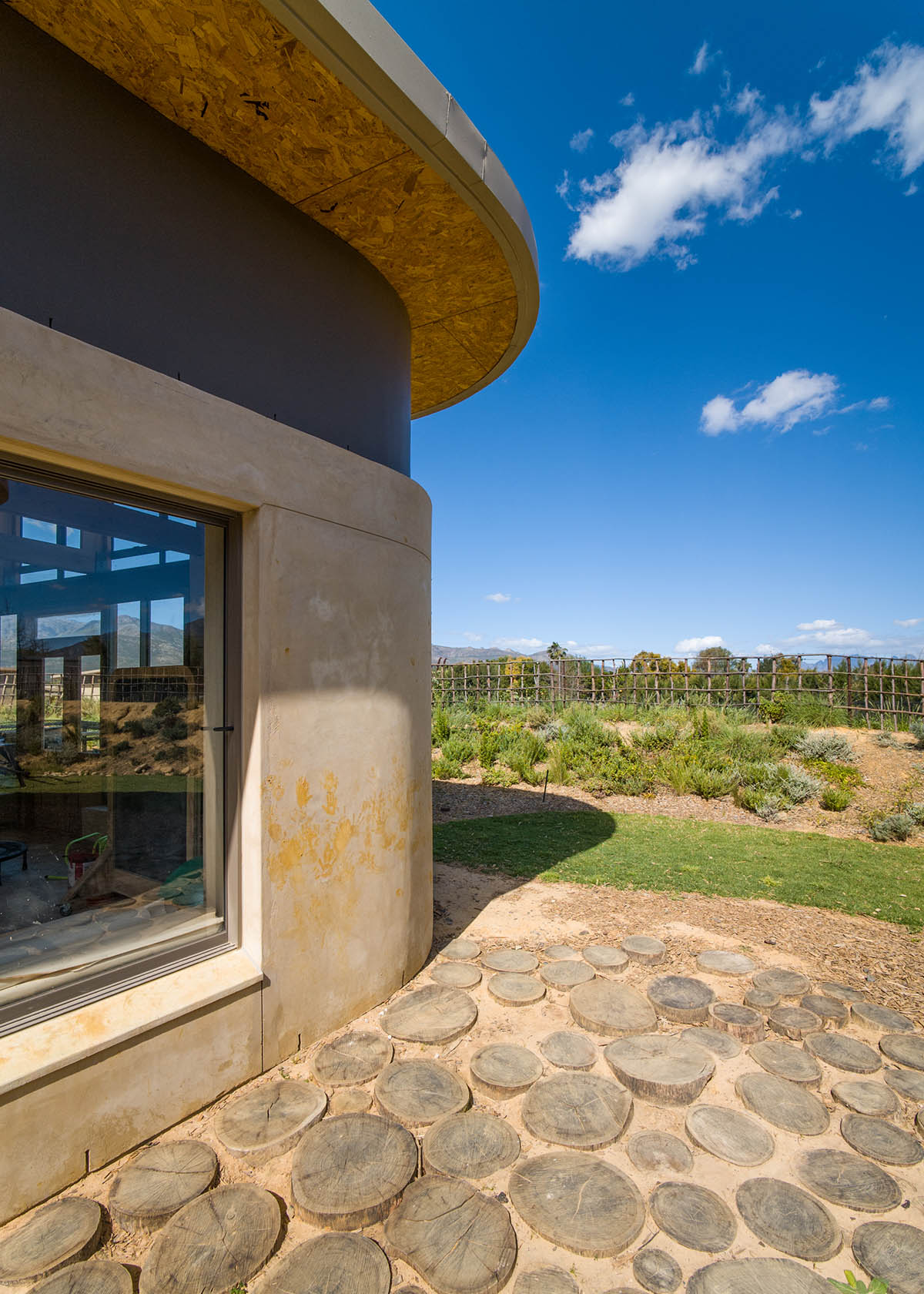
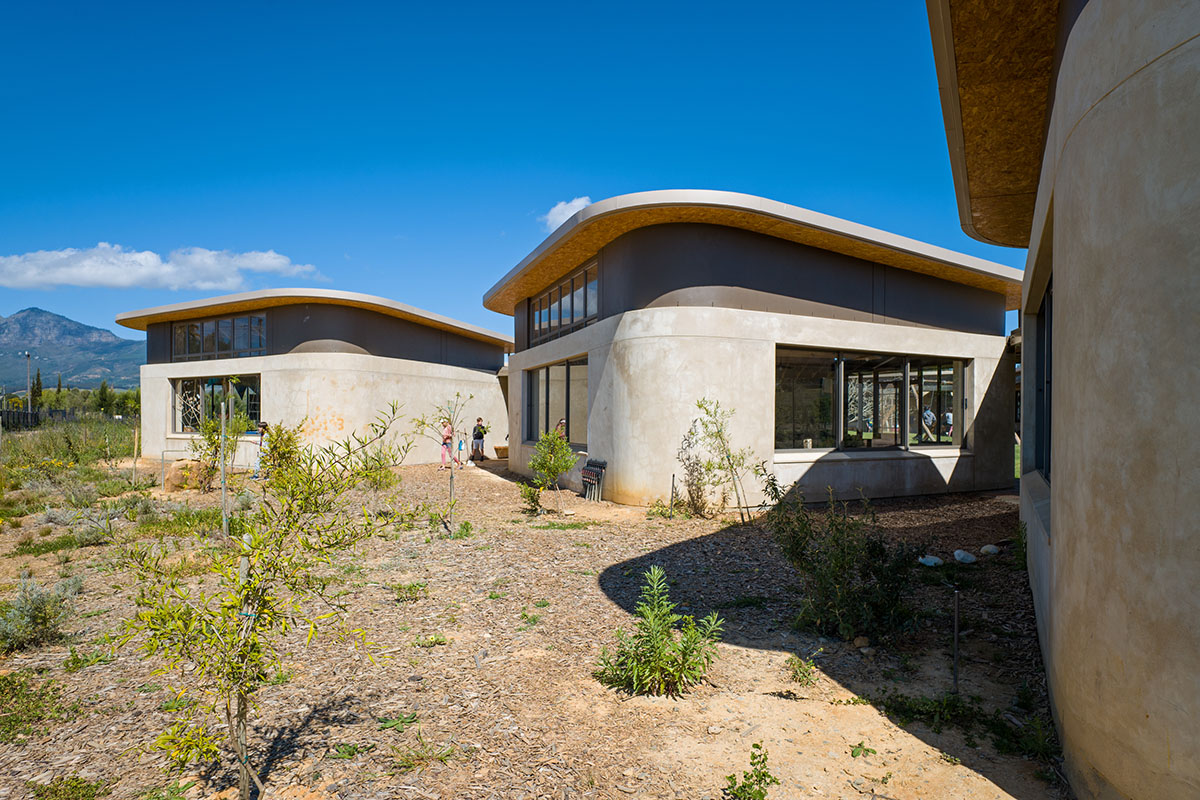
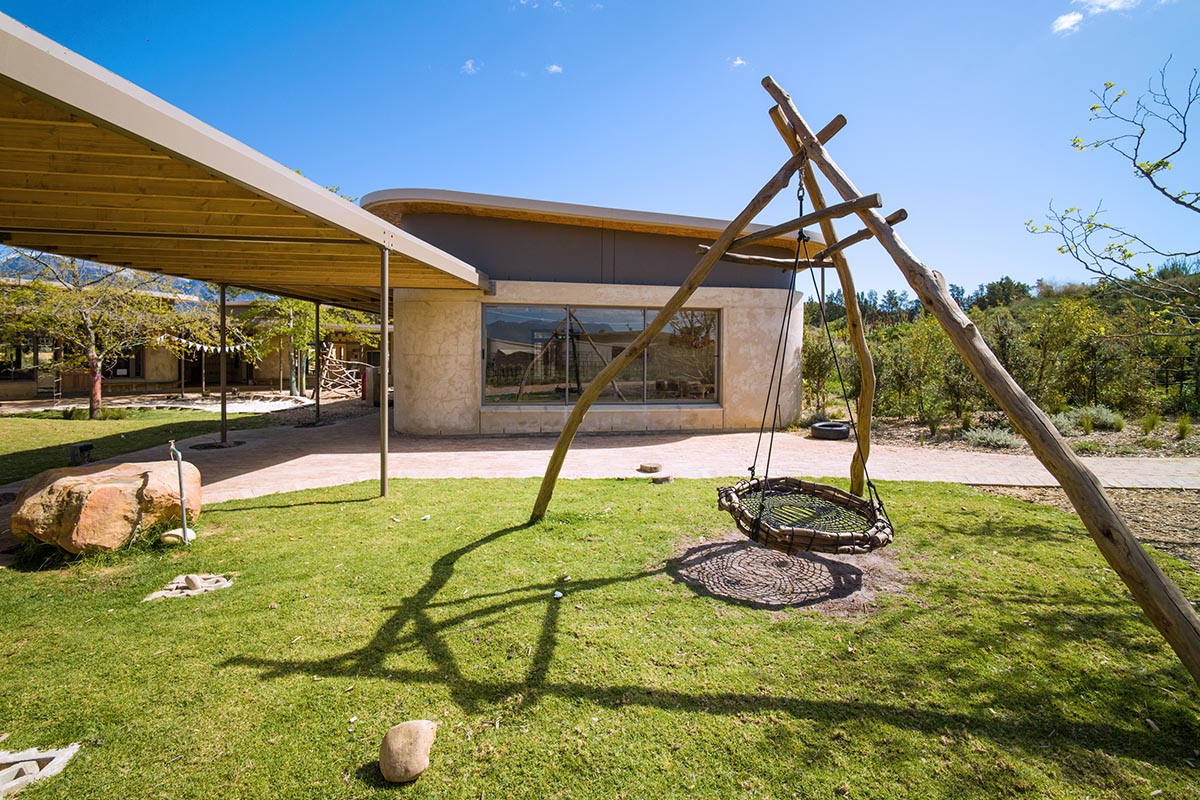
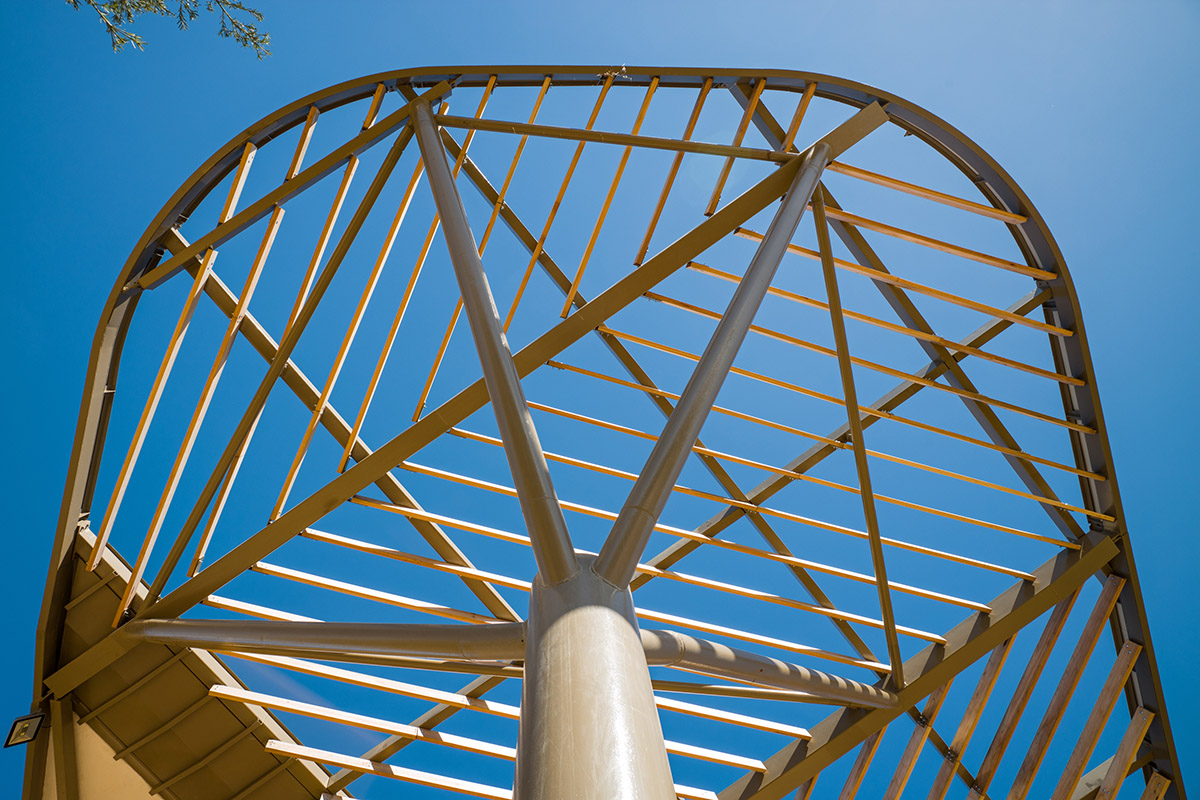
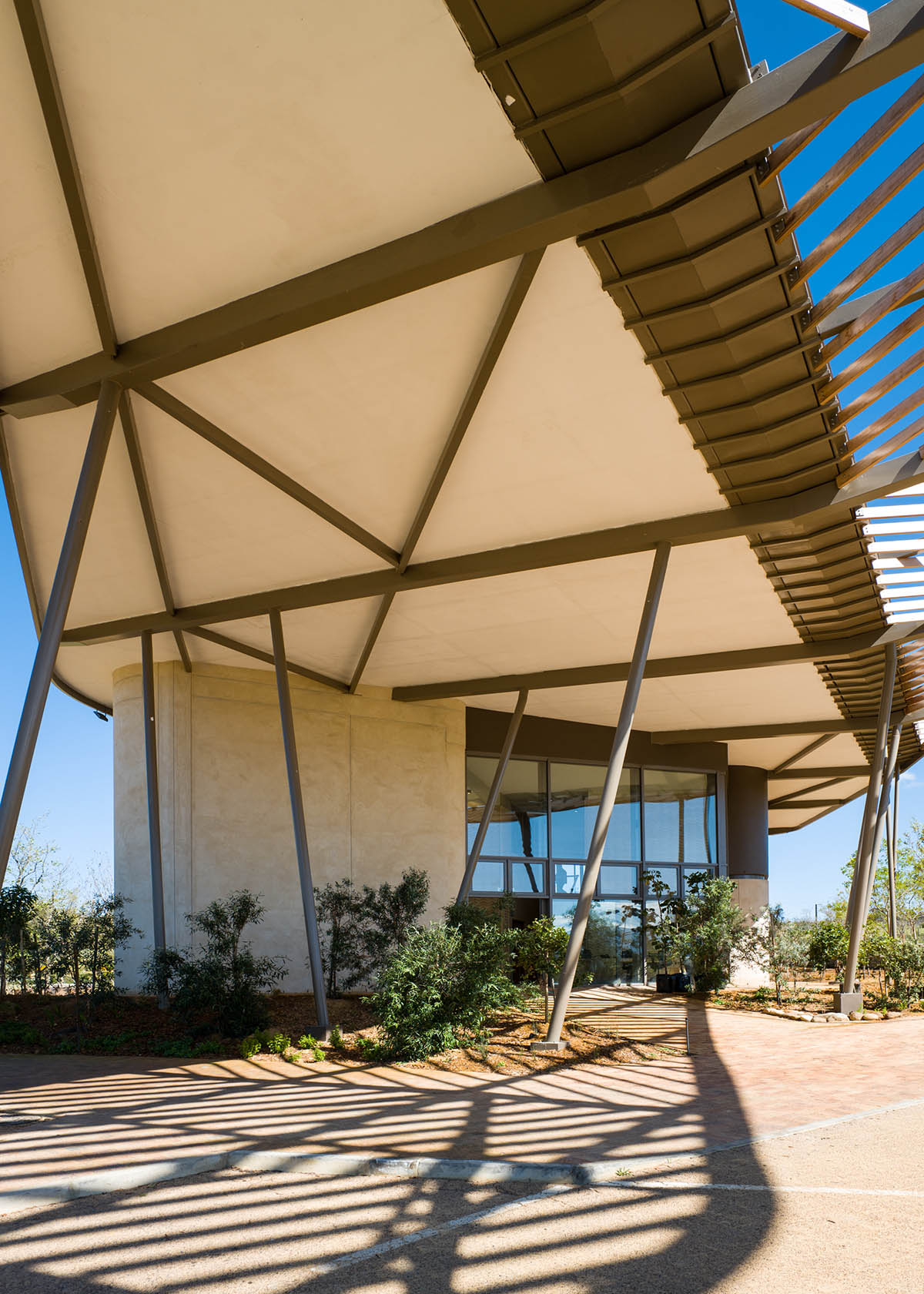
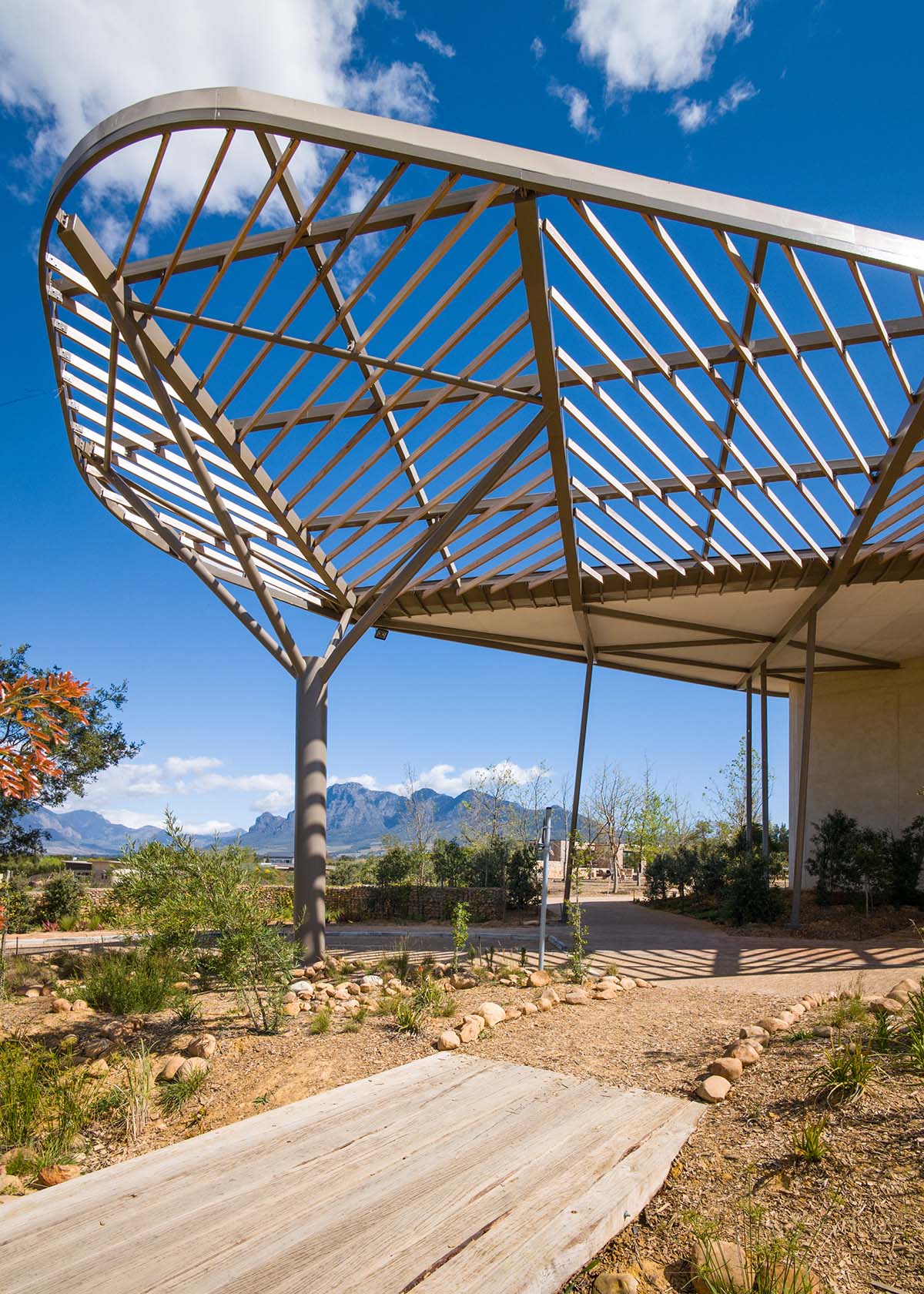
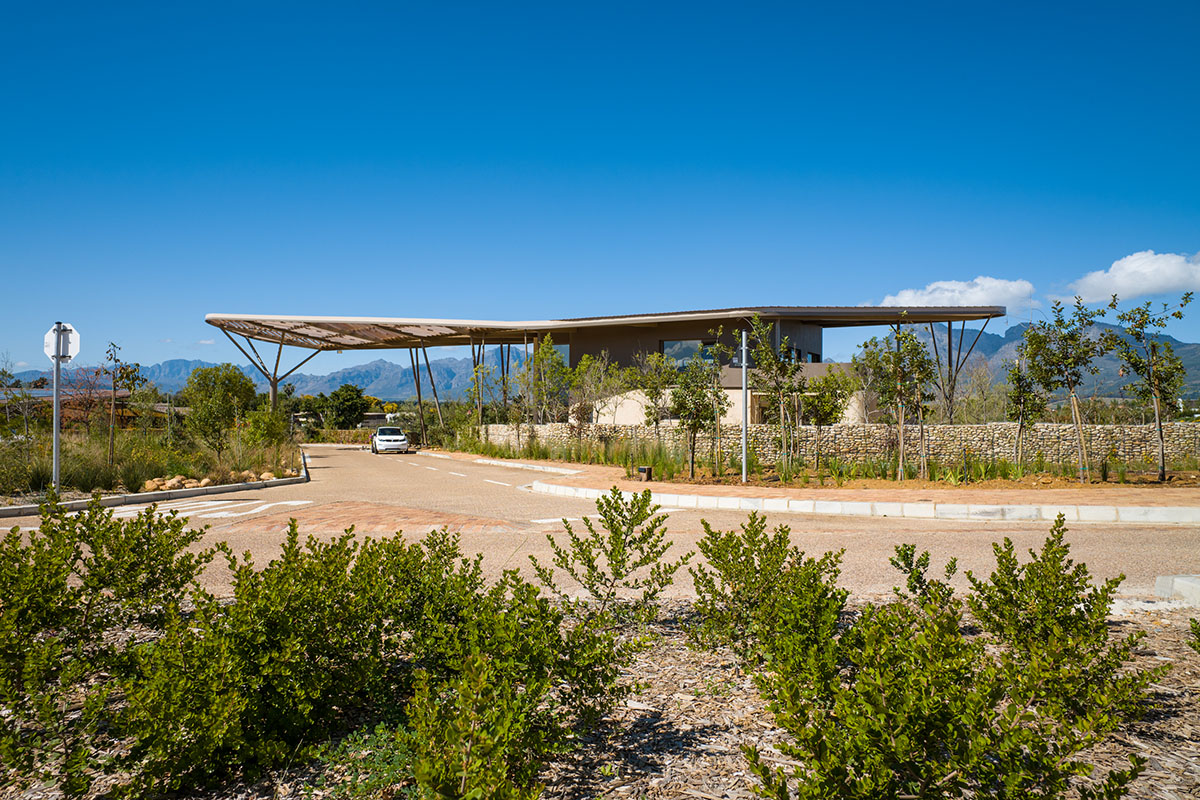
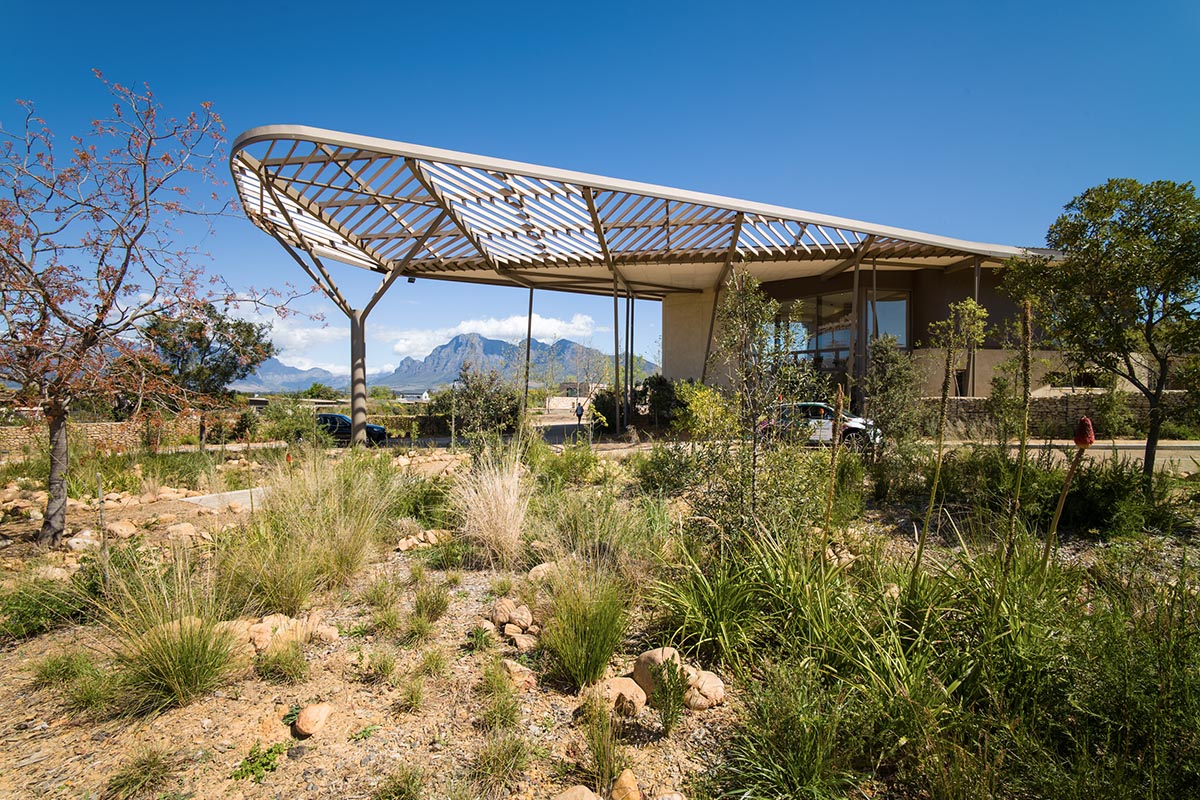
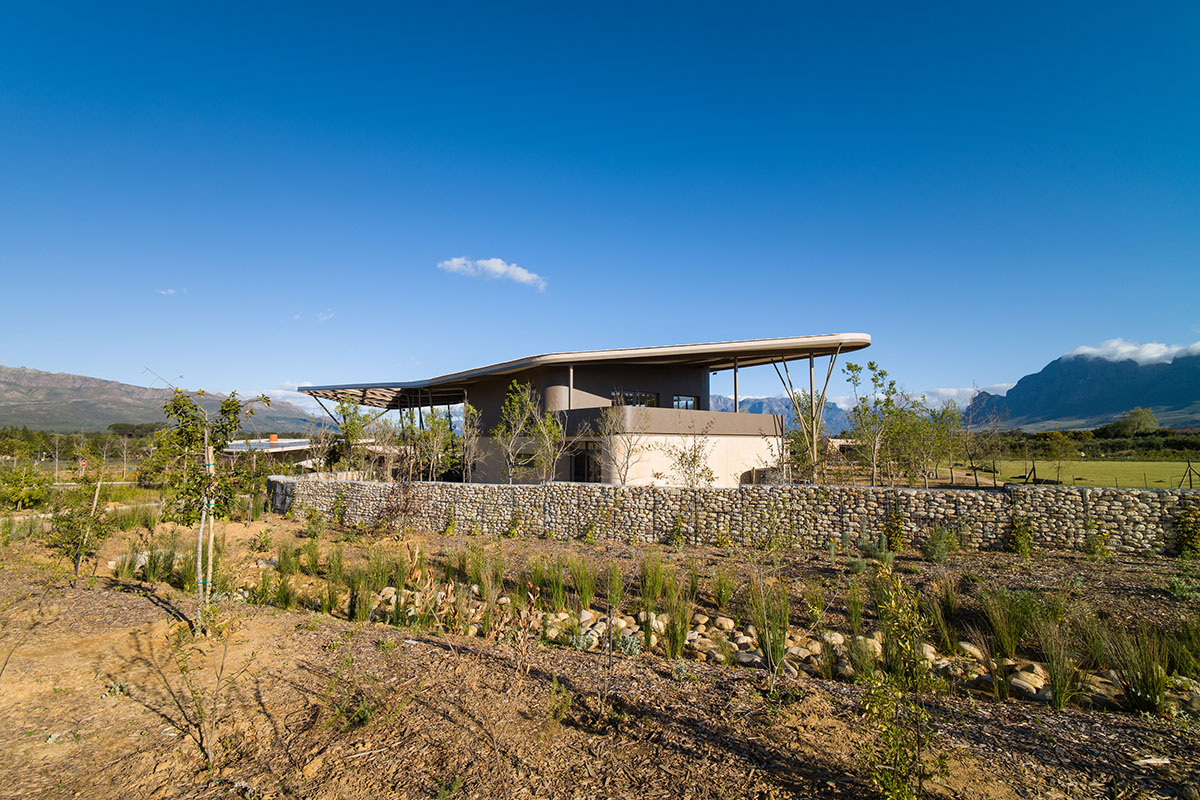
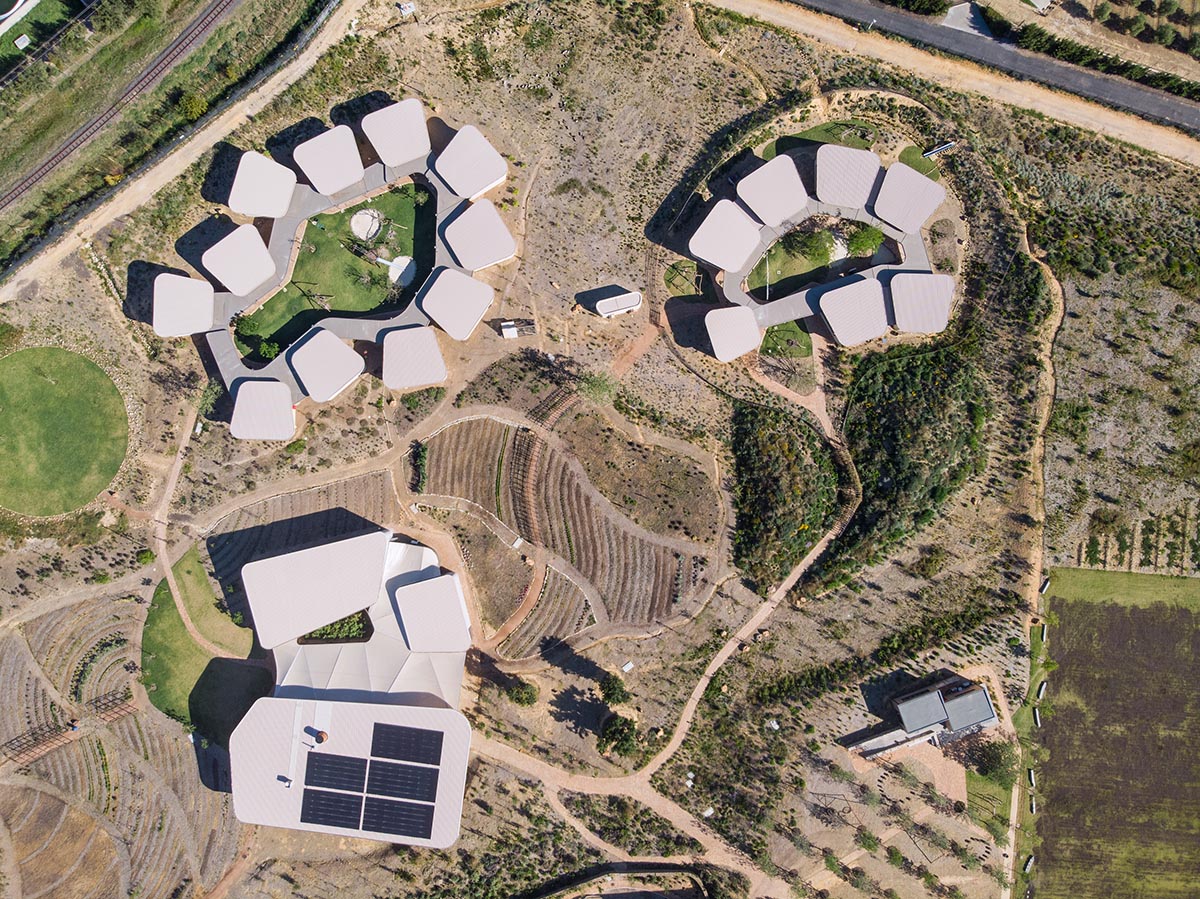
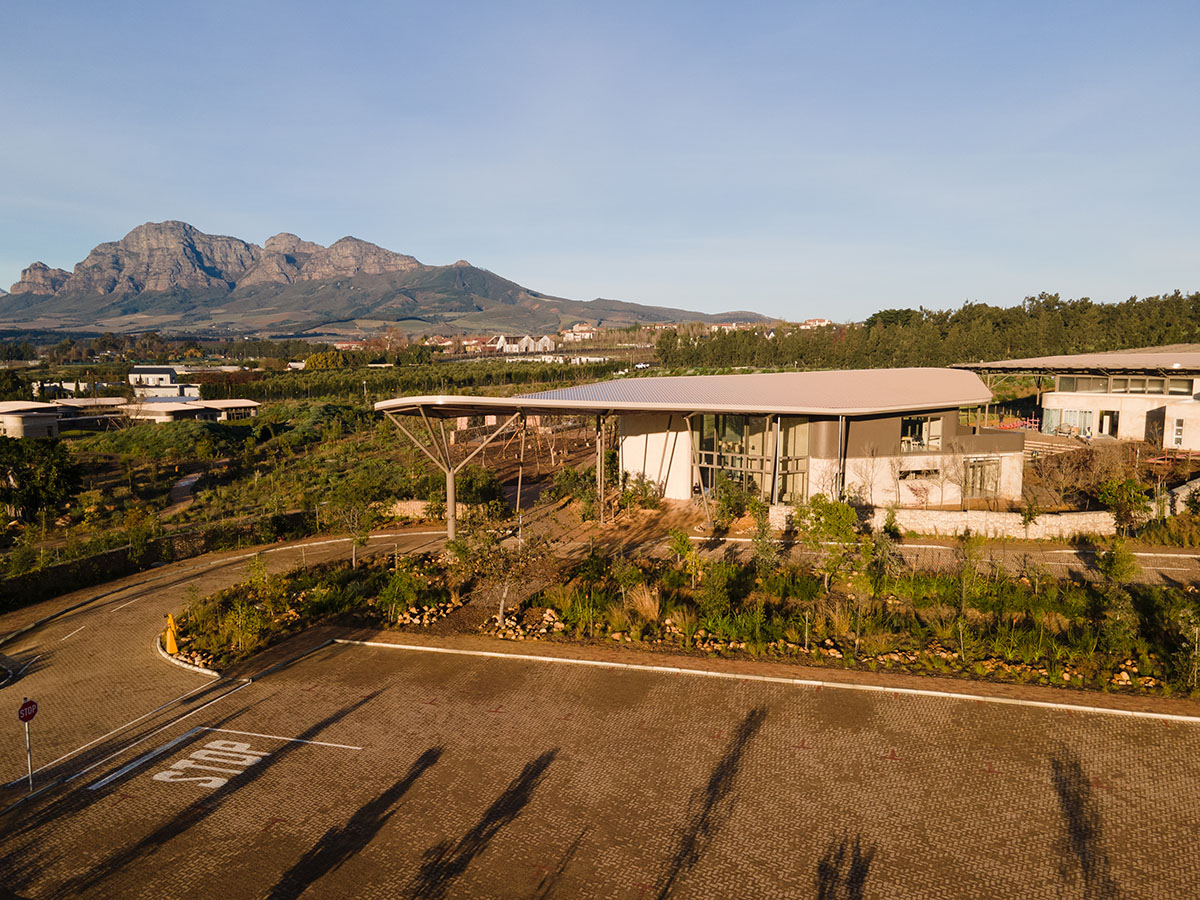

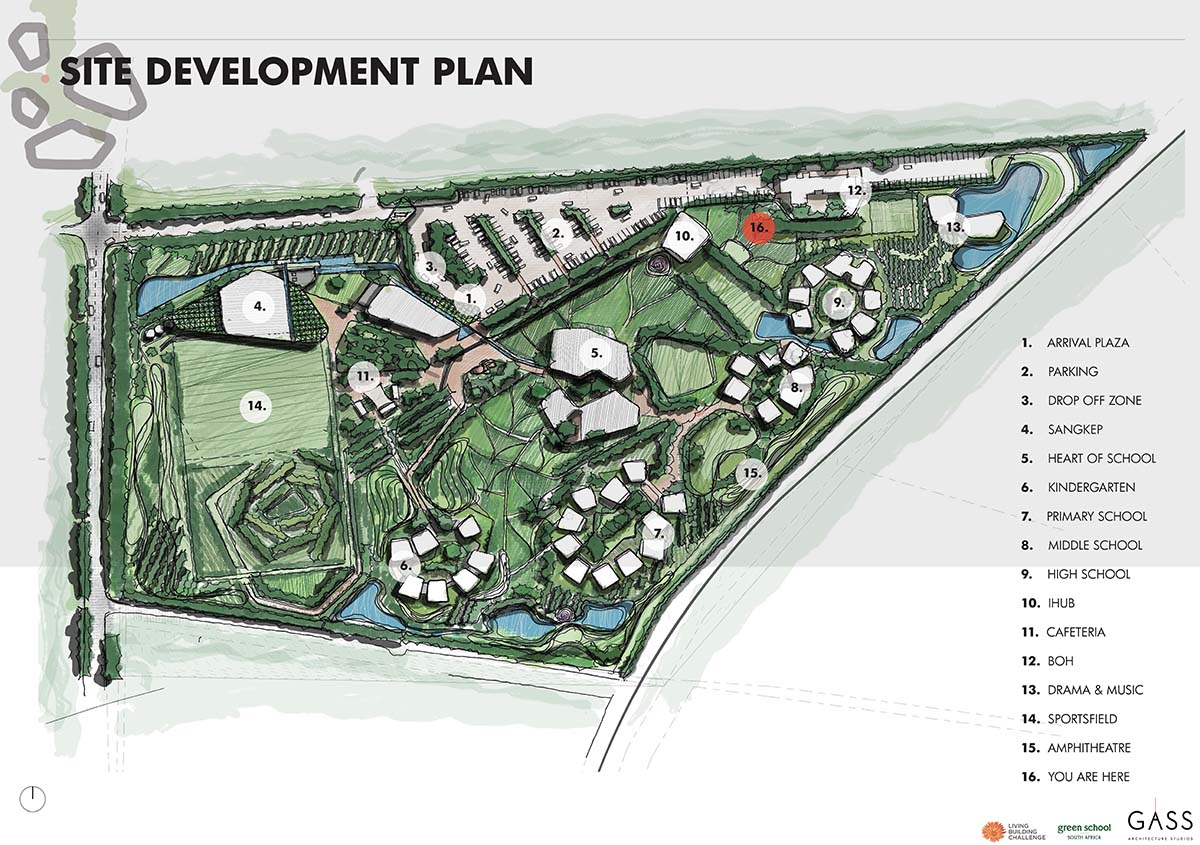
Site plan with functions
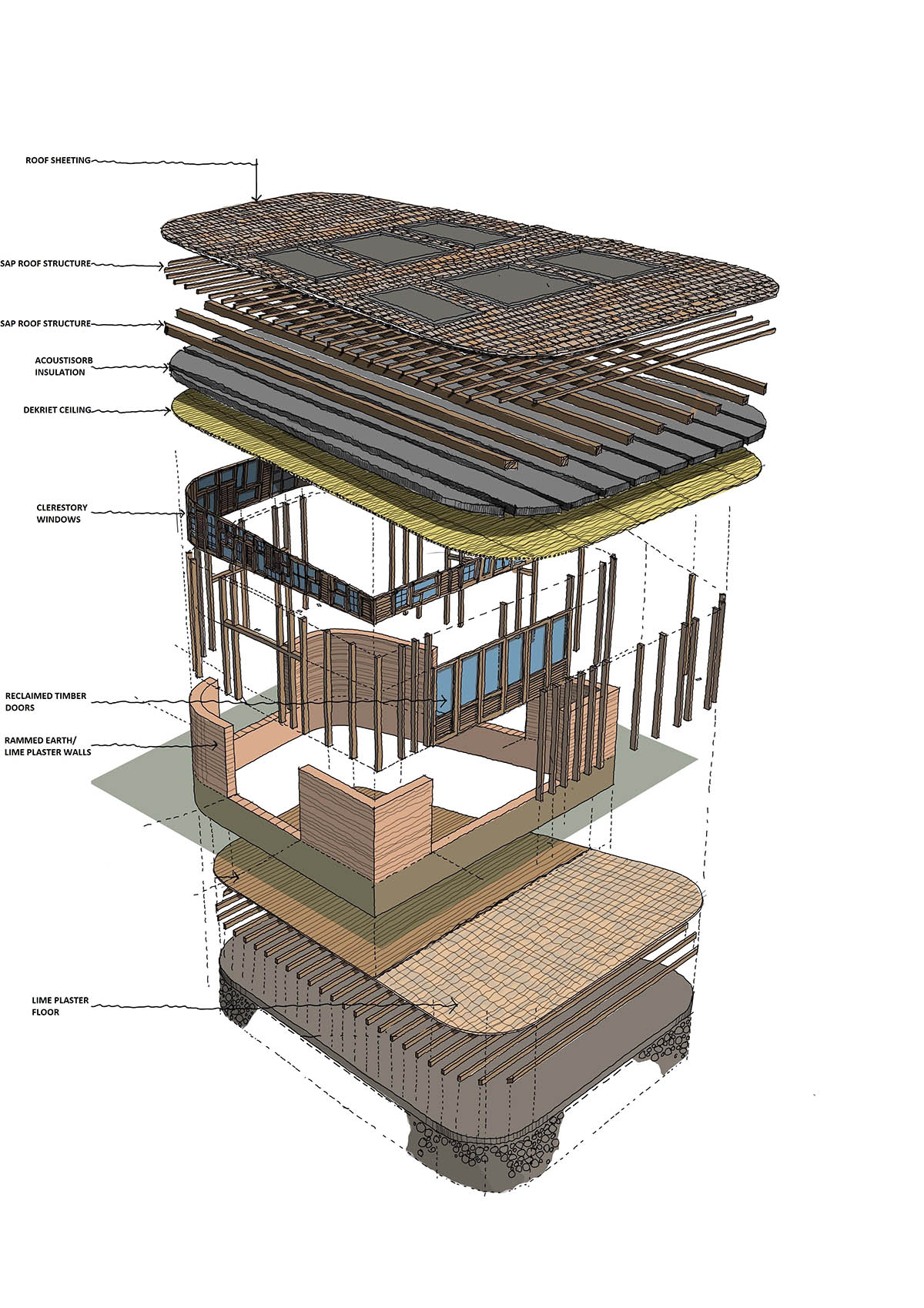
Classroom axonometric drawing
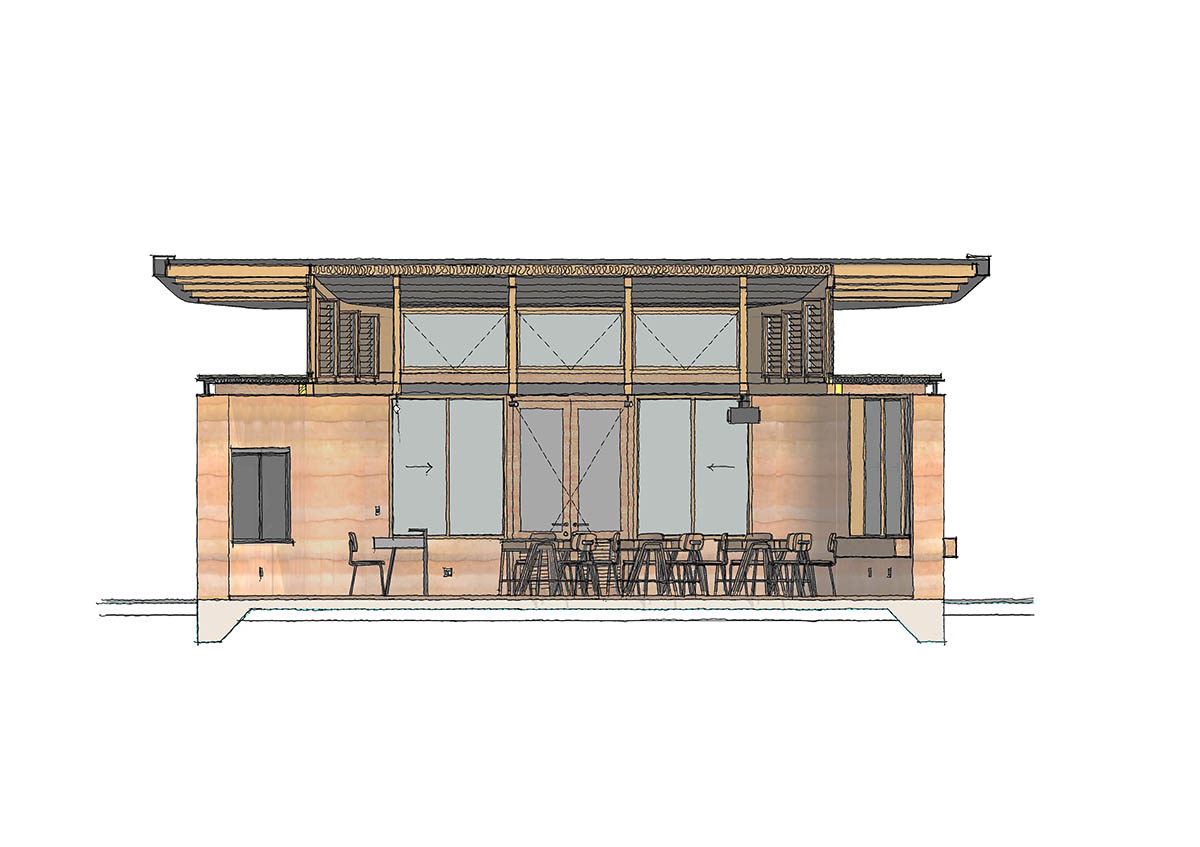
Classroom section sketch
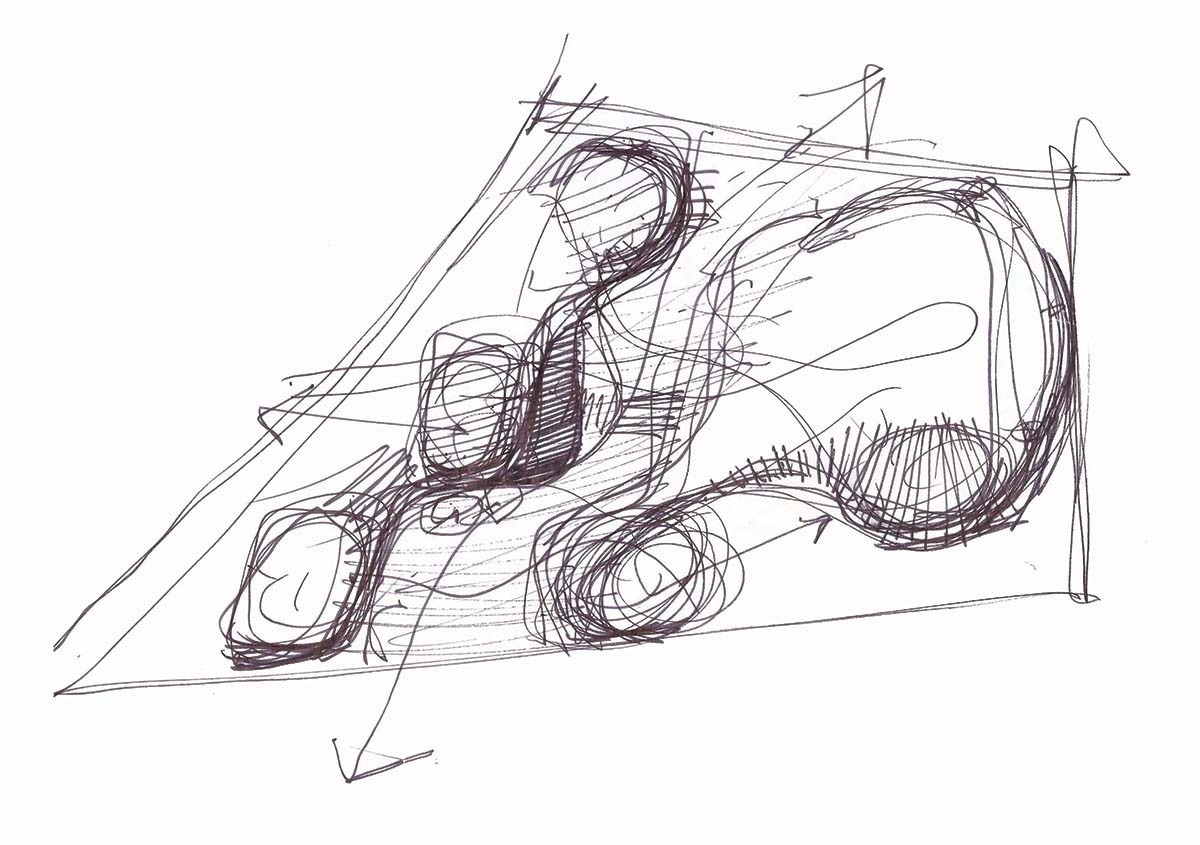
Concept sketch
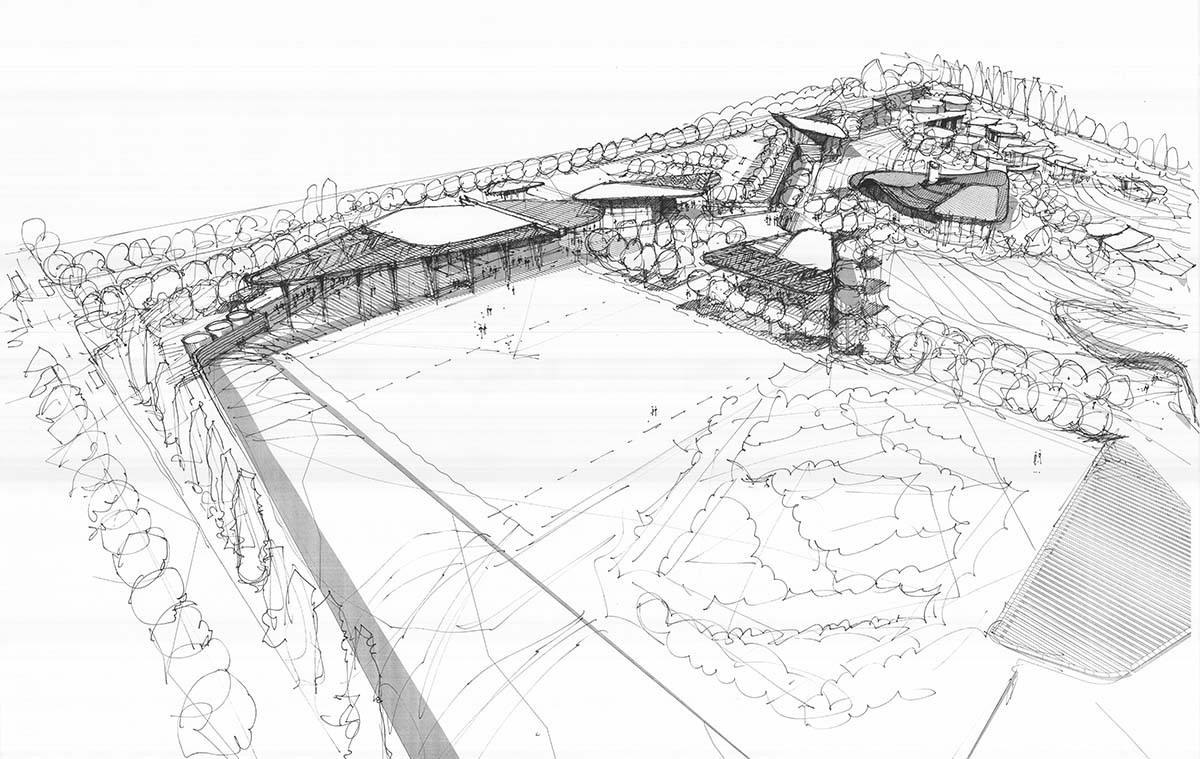
Sketch
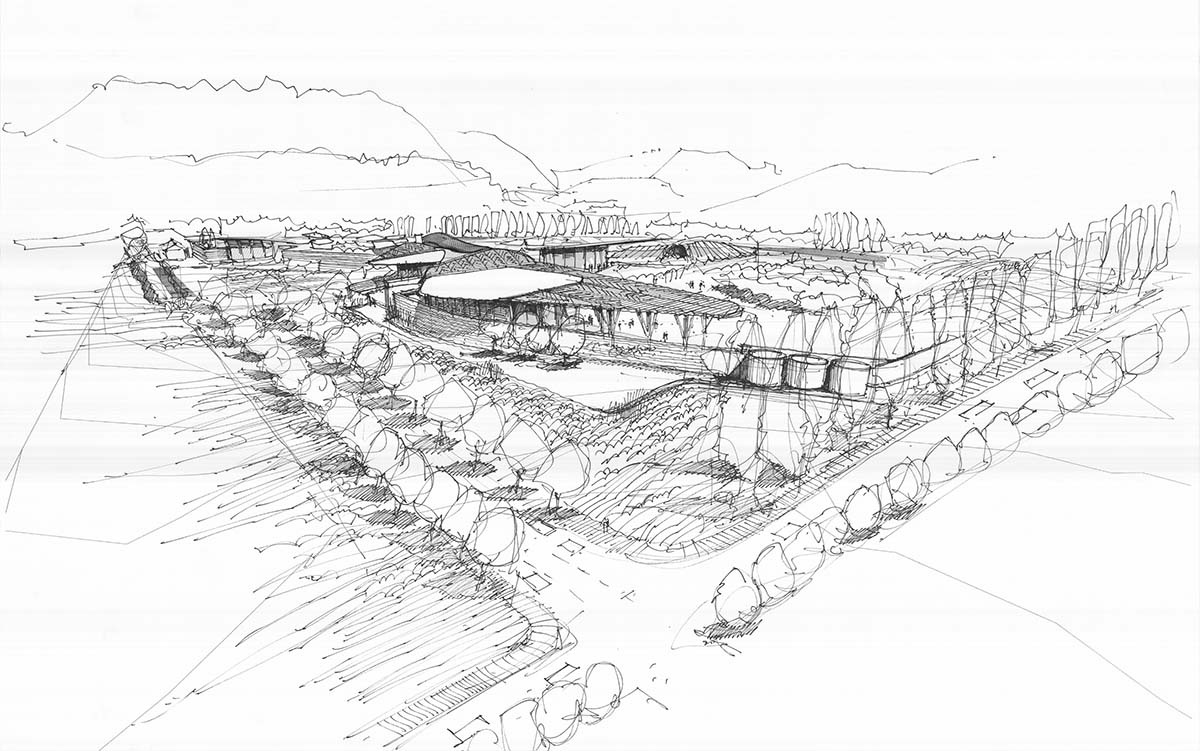
Sketch
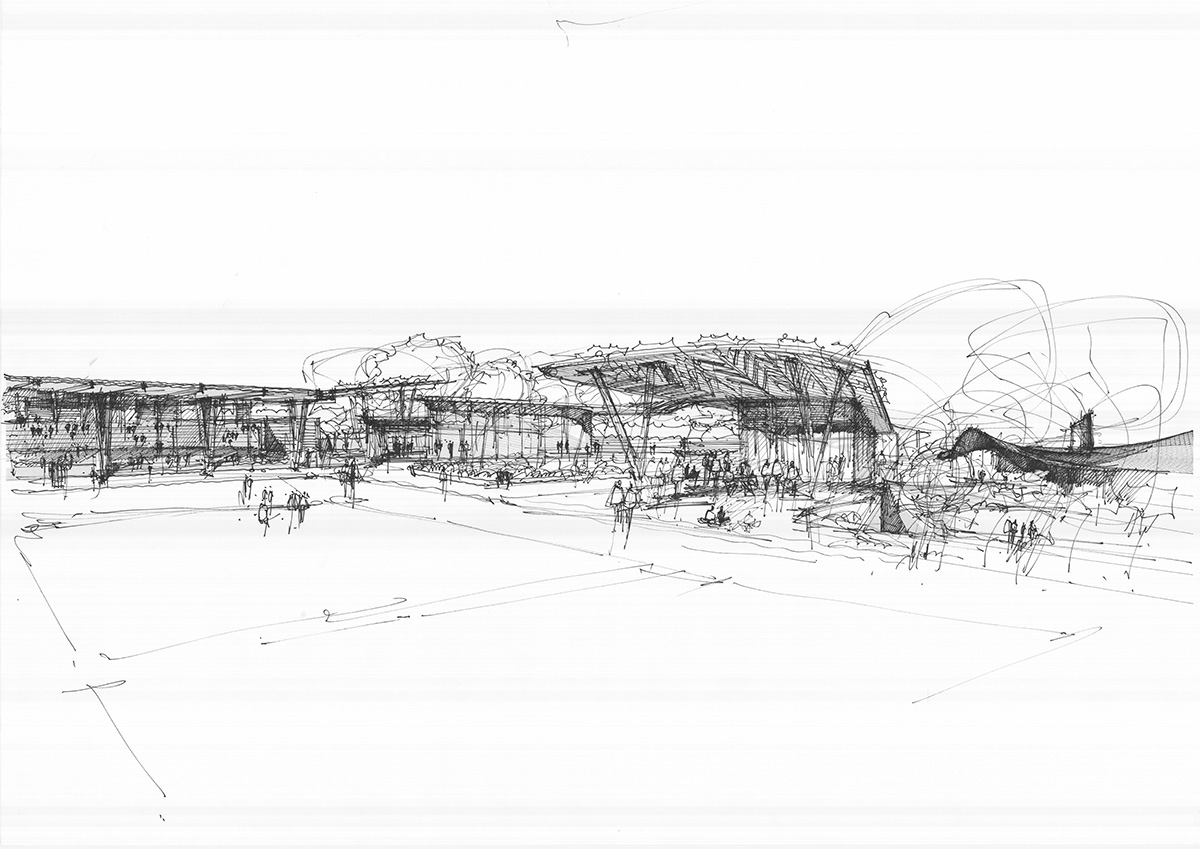
Sketch
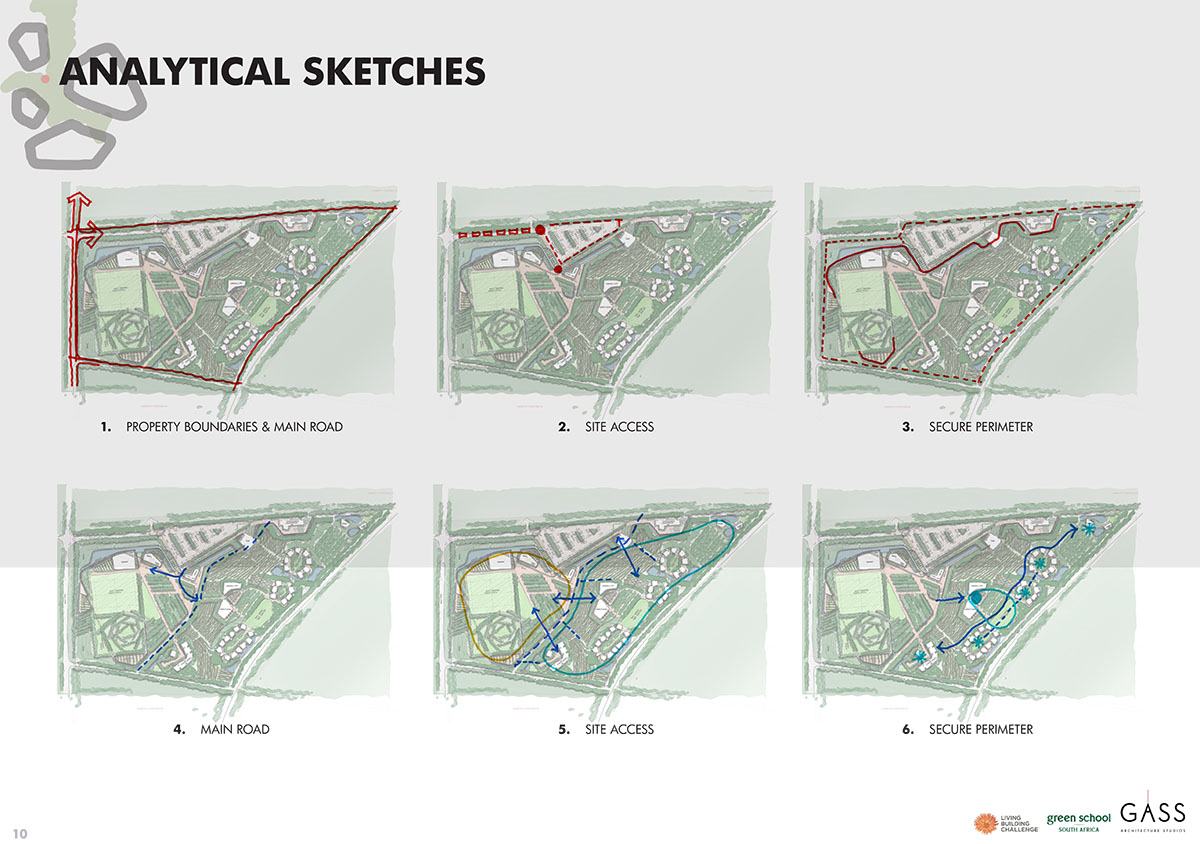
Analytical sketches
GASS, based in Johannesburg and Cape Town, South Africa, is led by four directors: Colin Tshivhase, Georg van Gass, Piet Boer, Thato Mahlong, Wandile Mntambo, Wessel van Dyk.
The office designs projects in various scale and typology - starting from mixed-use, commercial, retail, residential, student accommodation to urban renewal, educational, leisure, masterplans, urban precincts.
The studio adopts an integrated philosophy on their each project, focusing on sustainable design embracing the landscape.
Project facts
Project name: Green School South Africa
Architects: GASS Architecture Studios
Location: Paarl, Western Cape, South Africa
Size
Site Area: 81 110m²
Built Area: 3 313m²
Landscaped/Green Area: 63 408m²
Lead Architects: Wessel van Dyk, Chris Bakker, Theuna Stoltz
All images © Wieland Gleich – ARCHIGRAPHY
All drawings © GASS Architecture Studios
